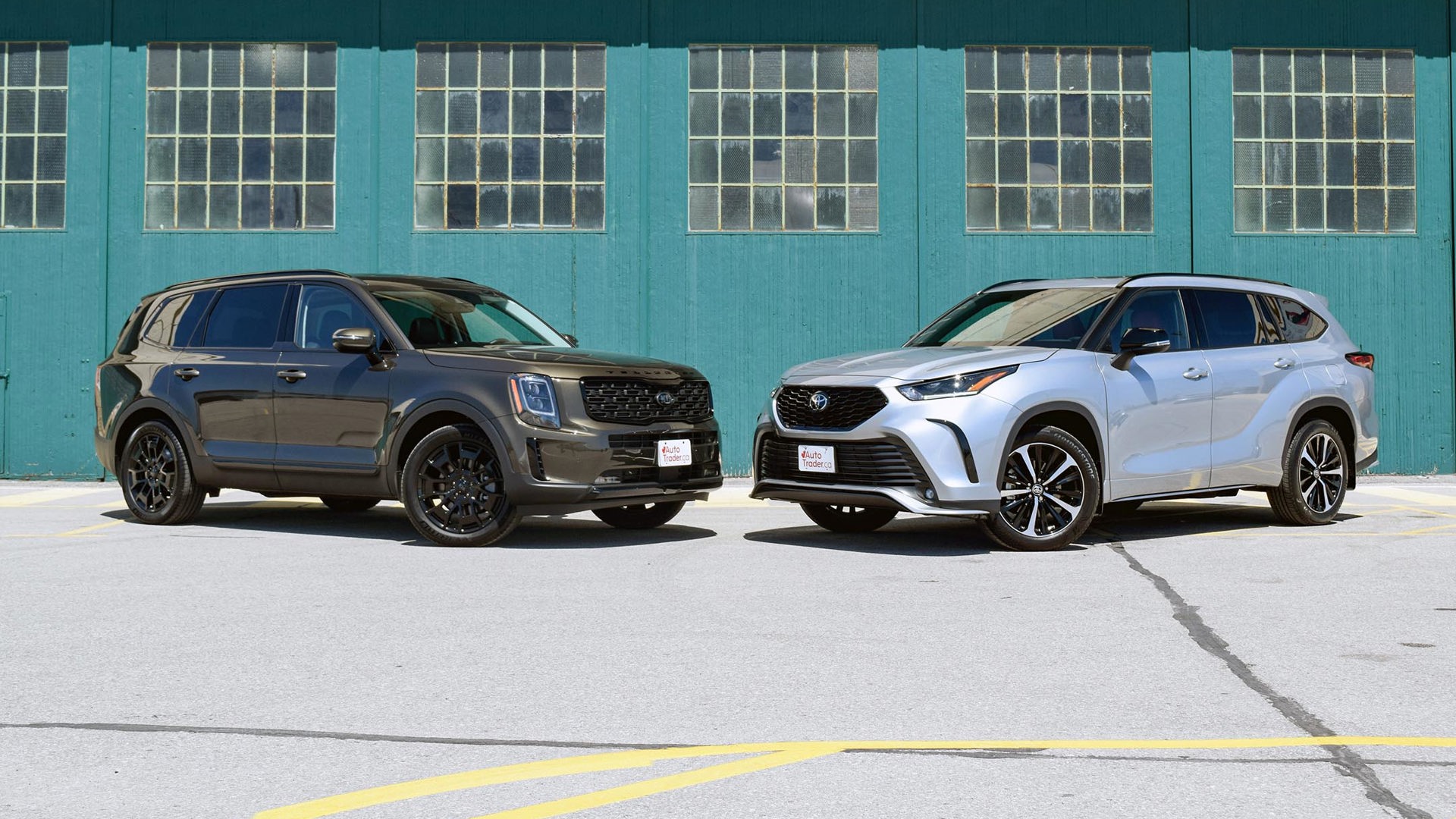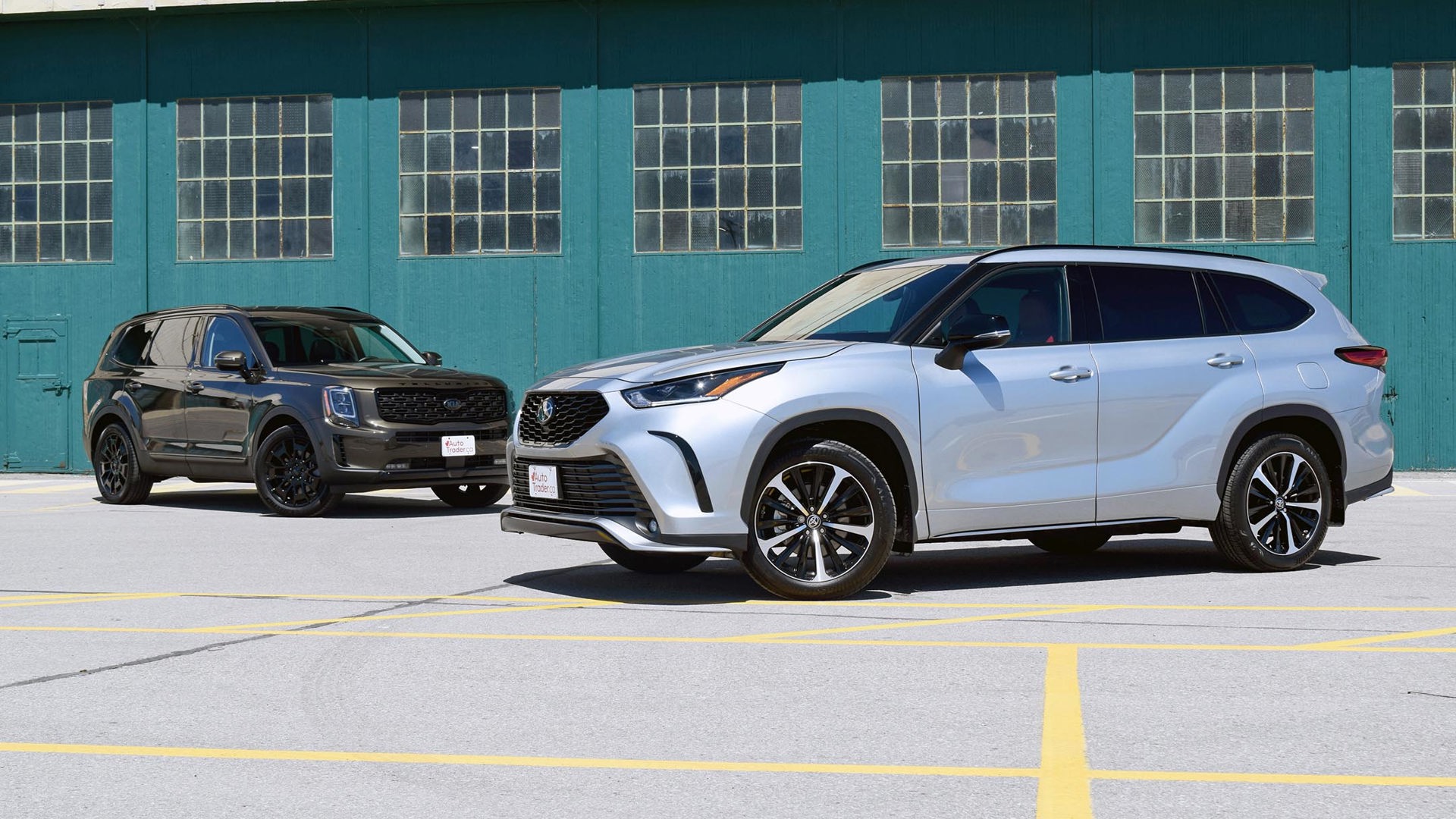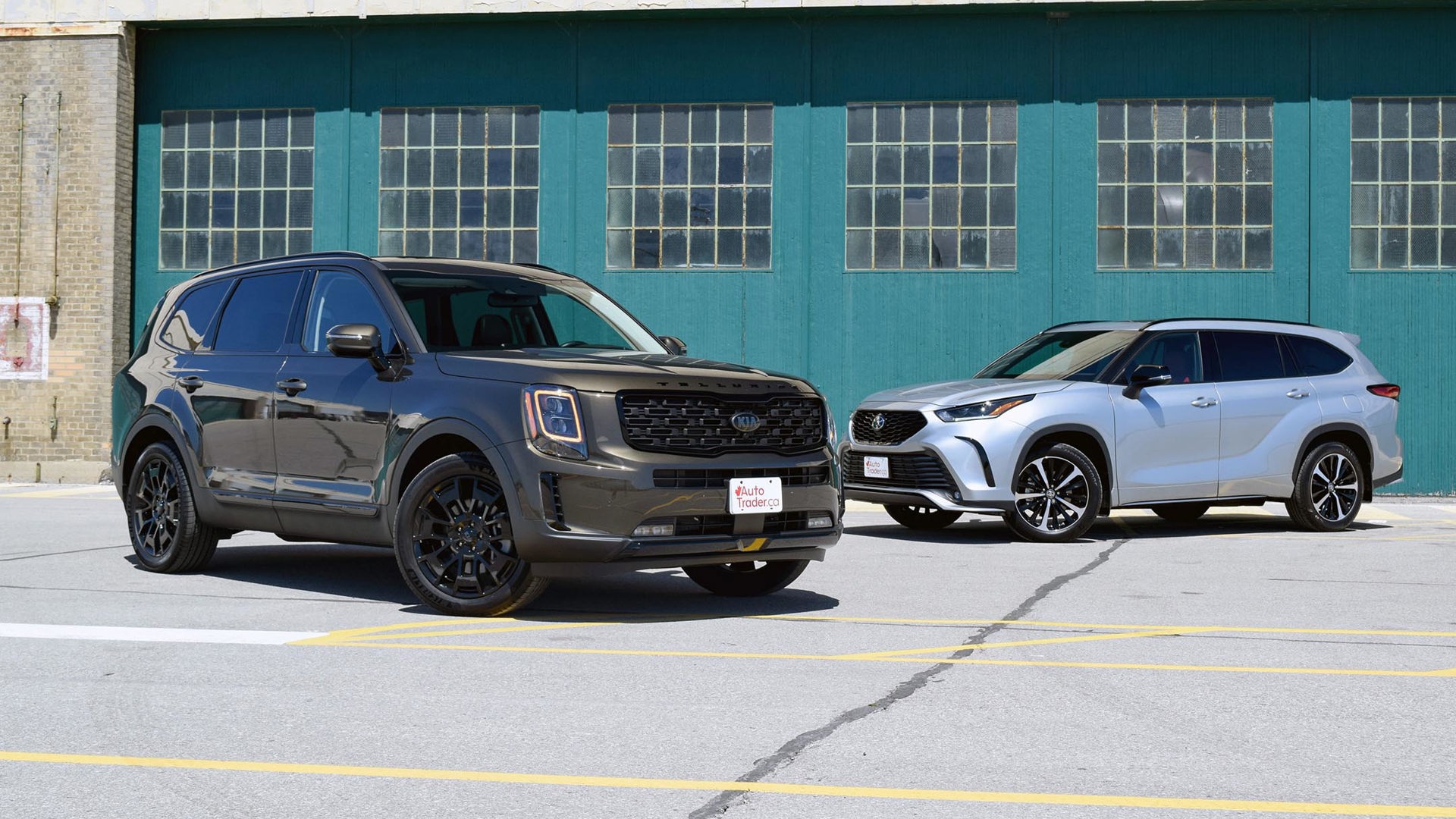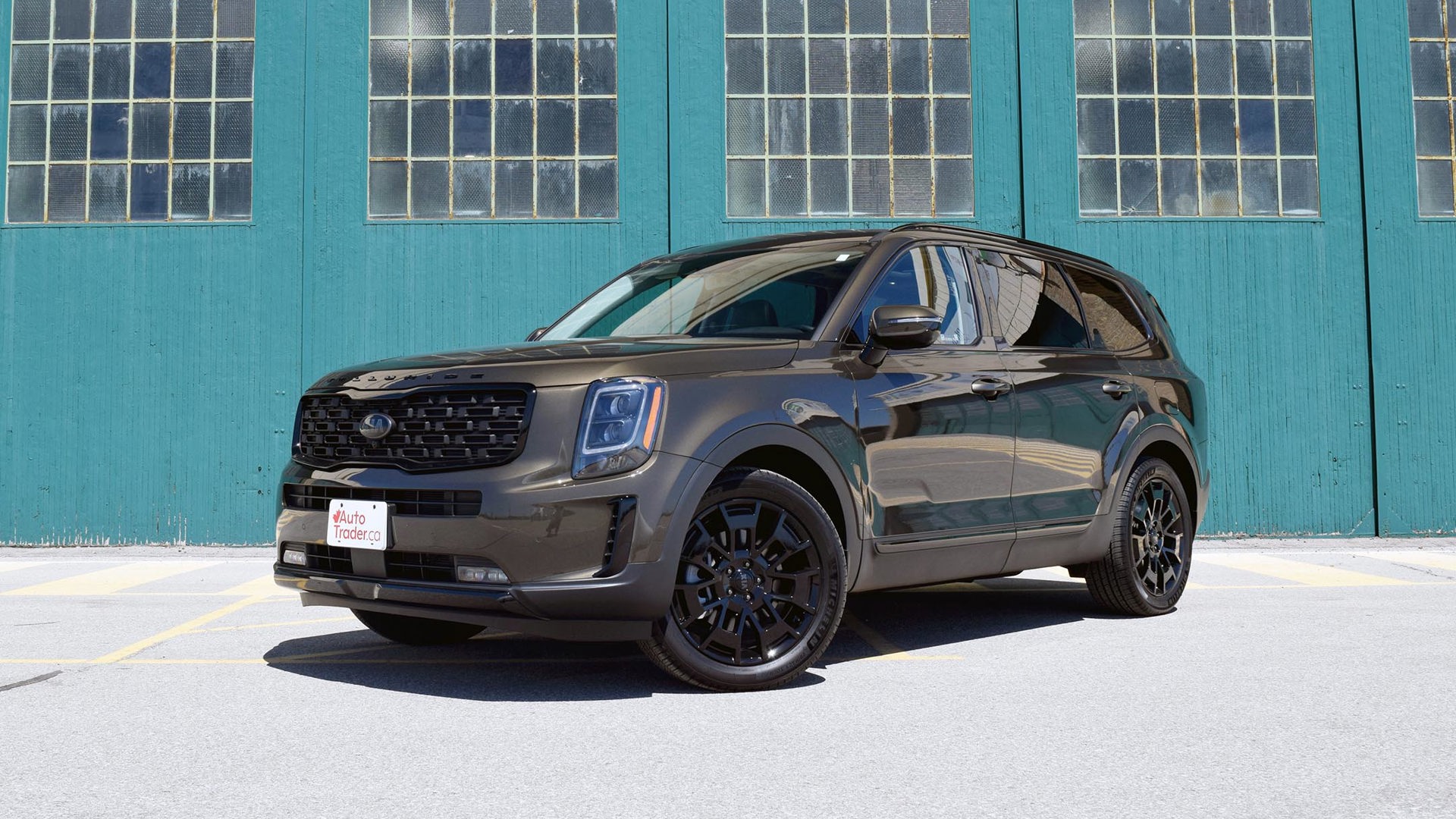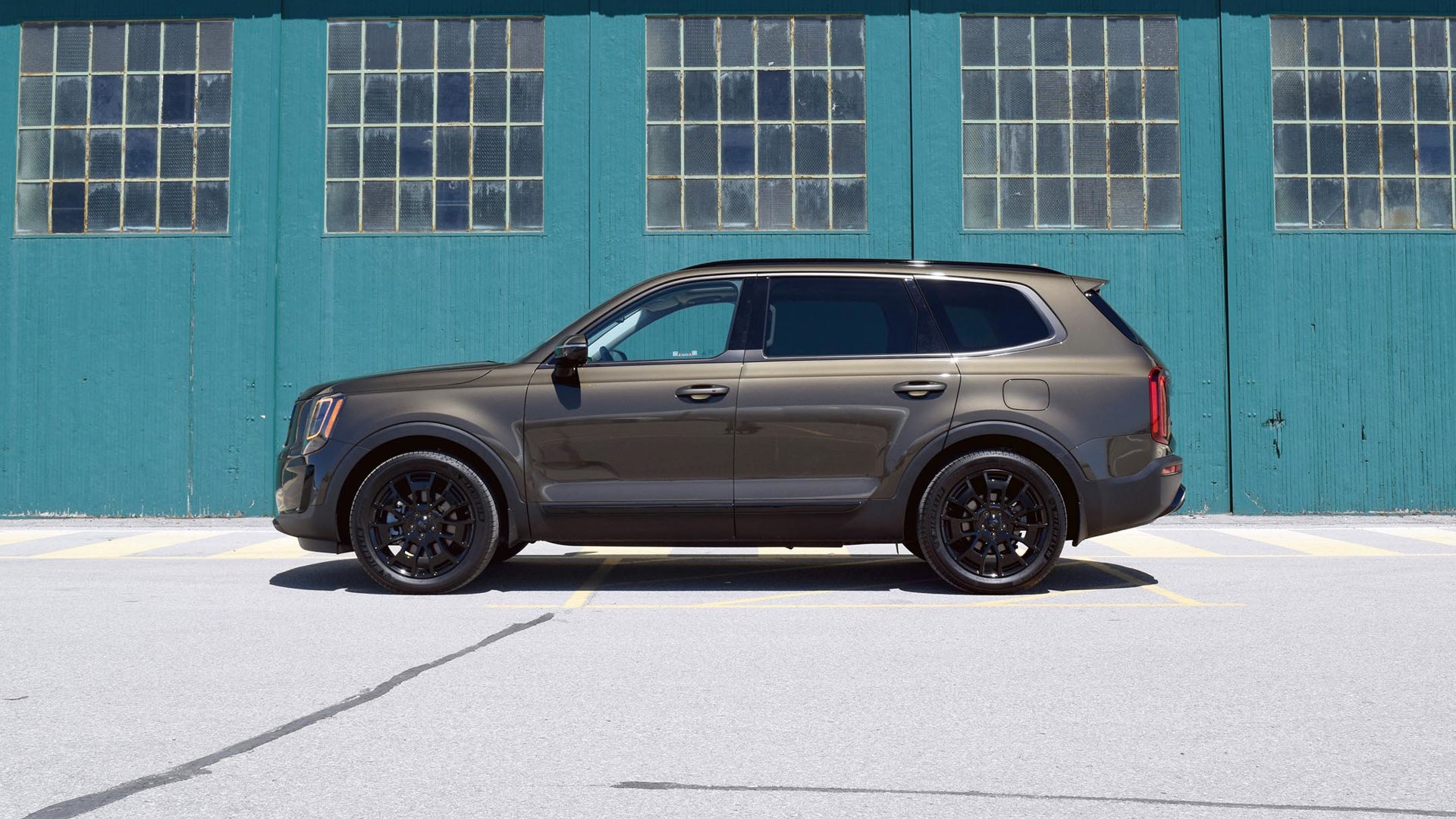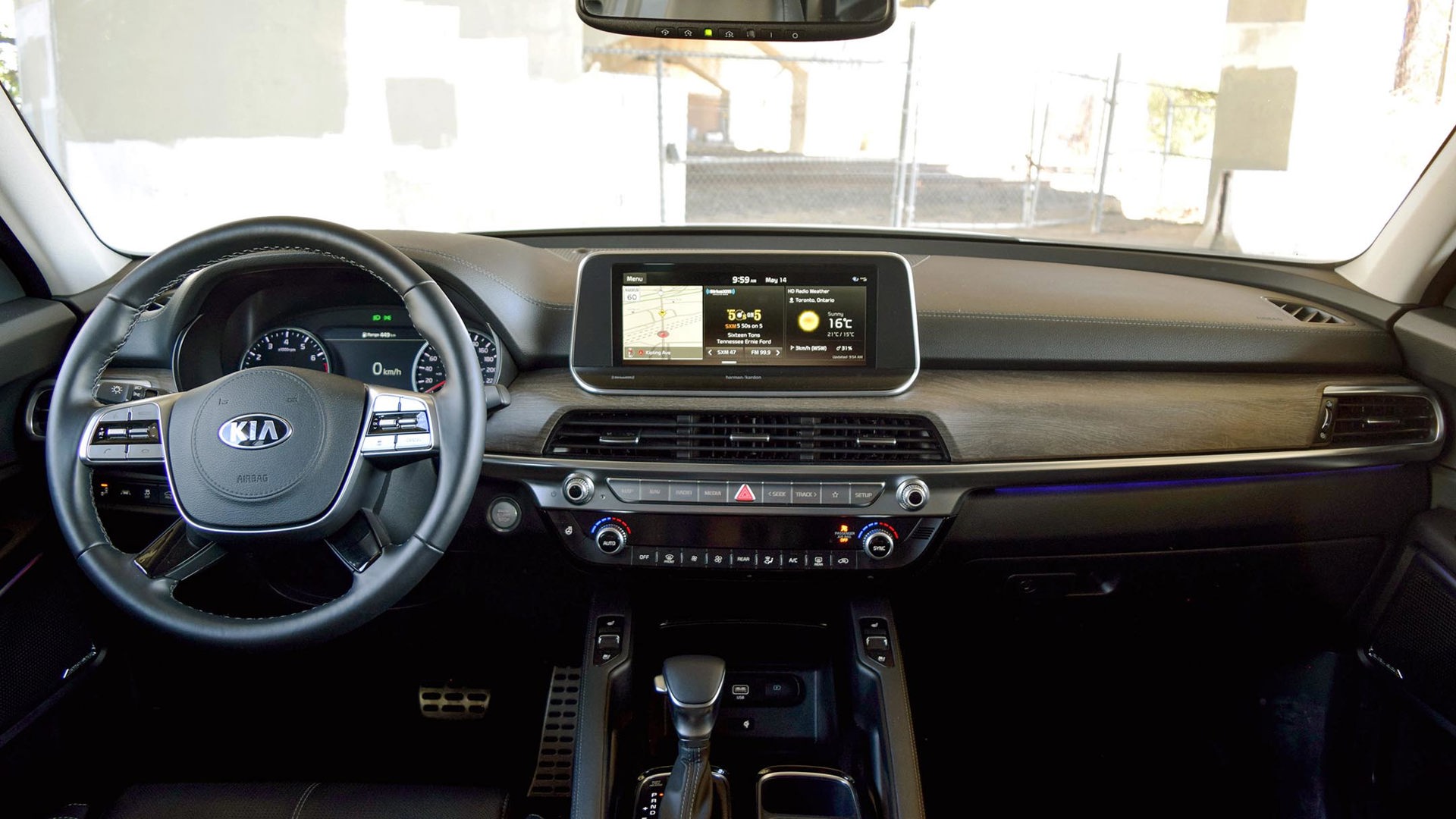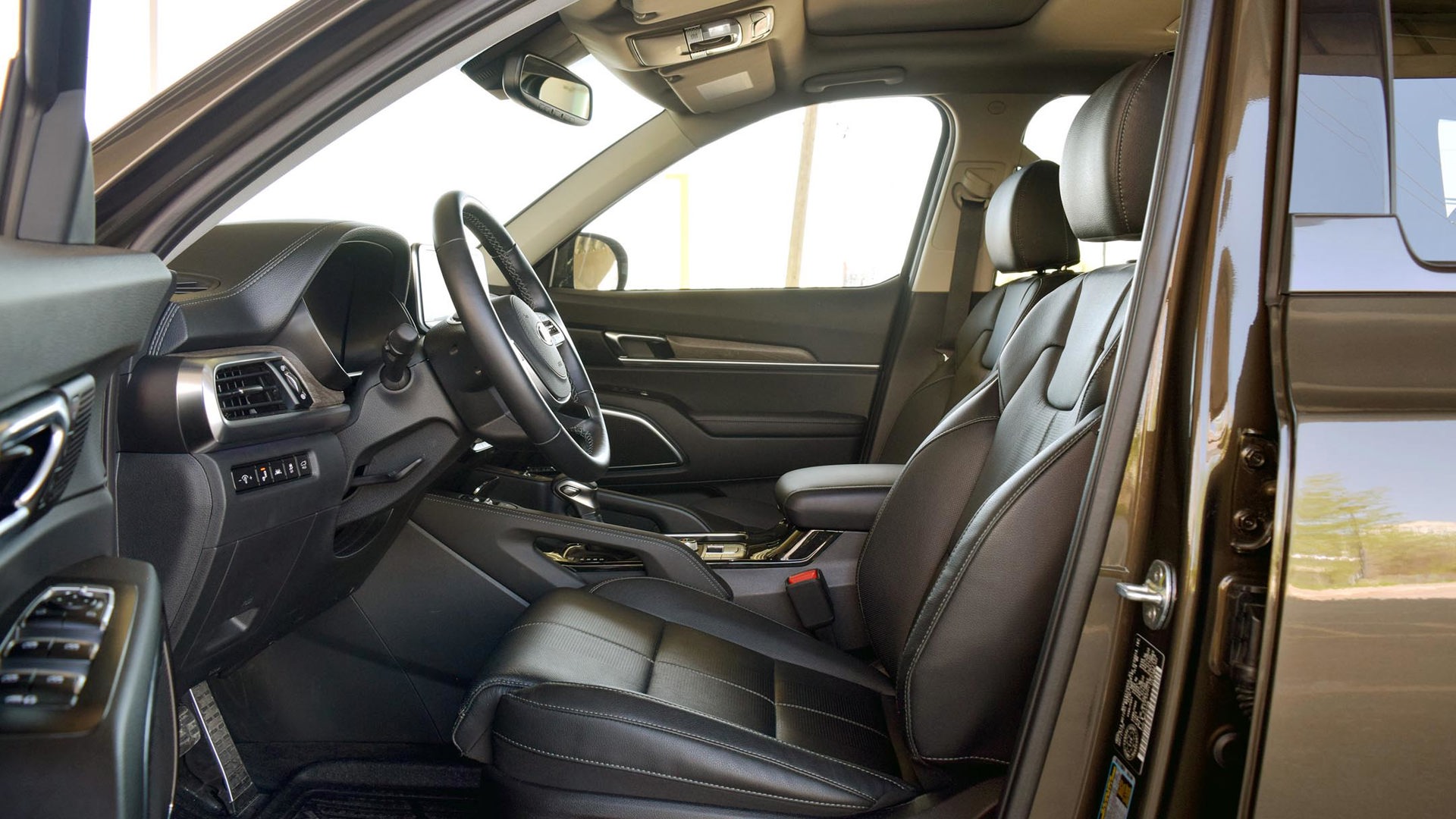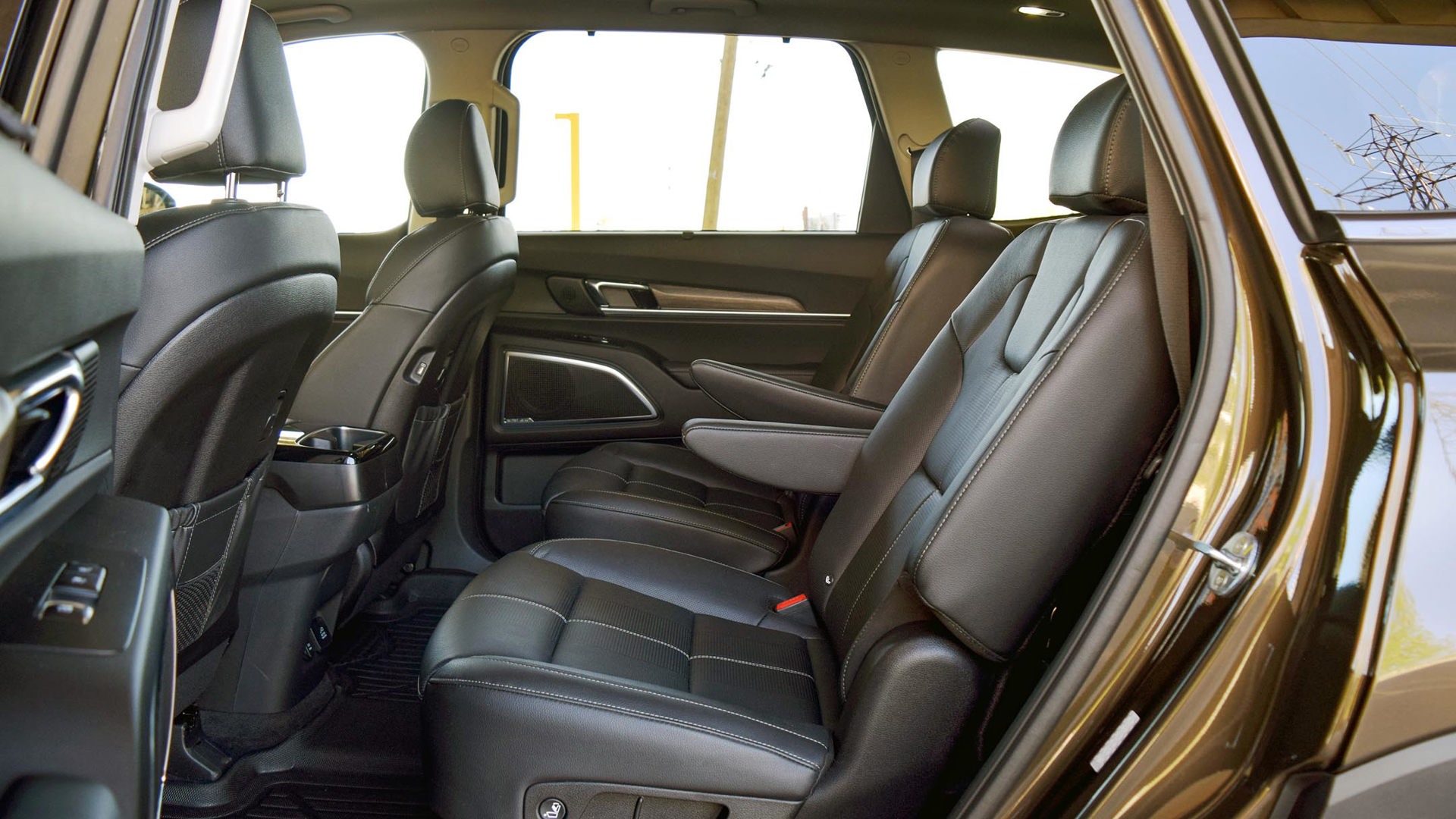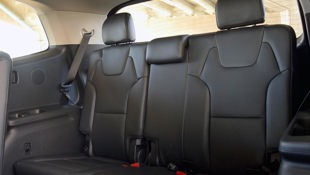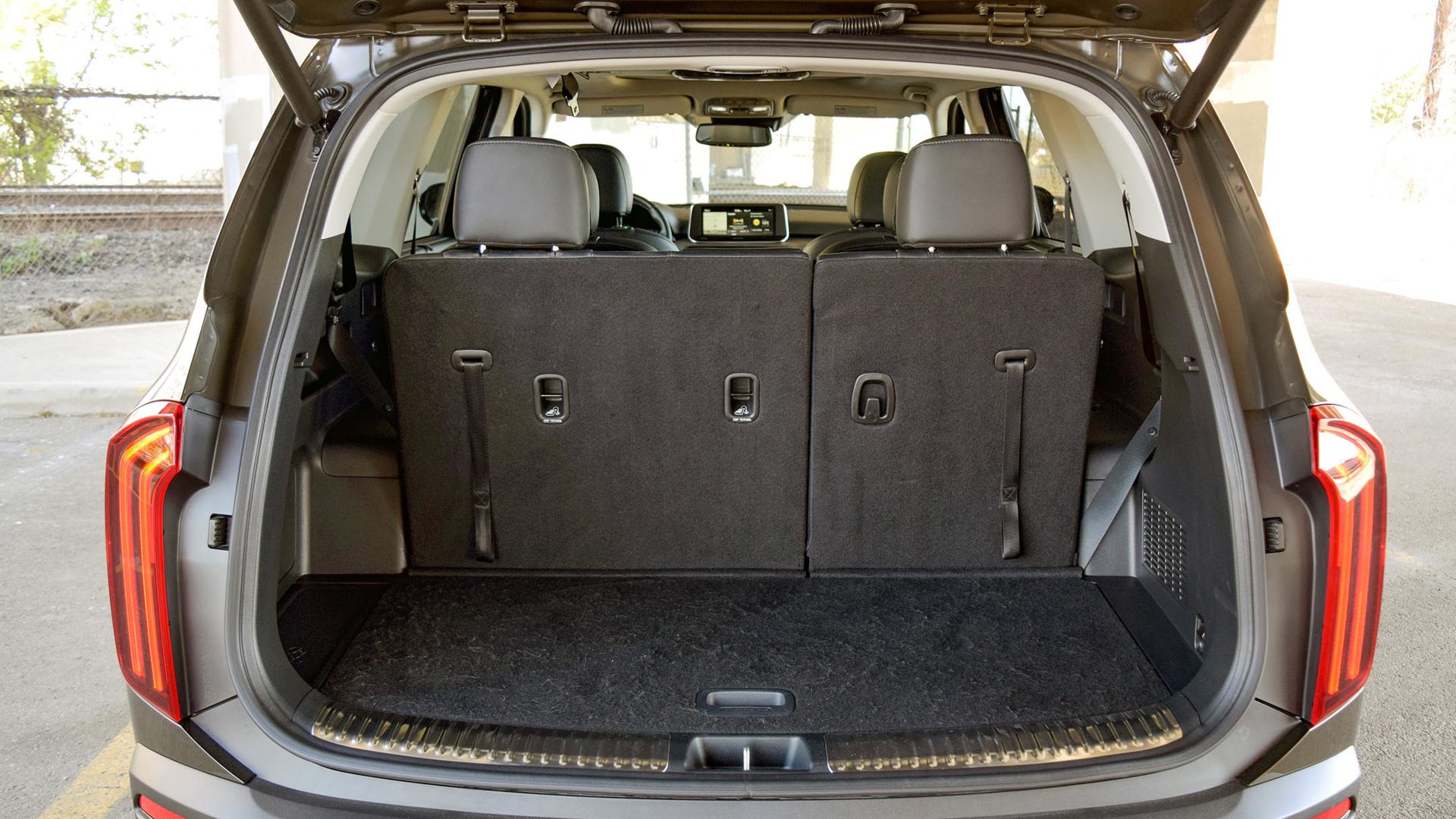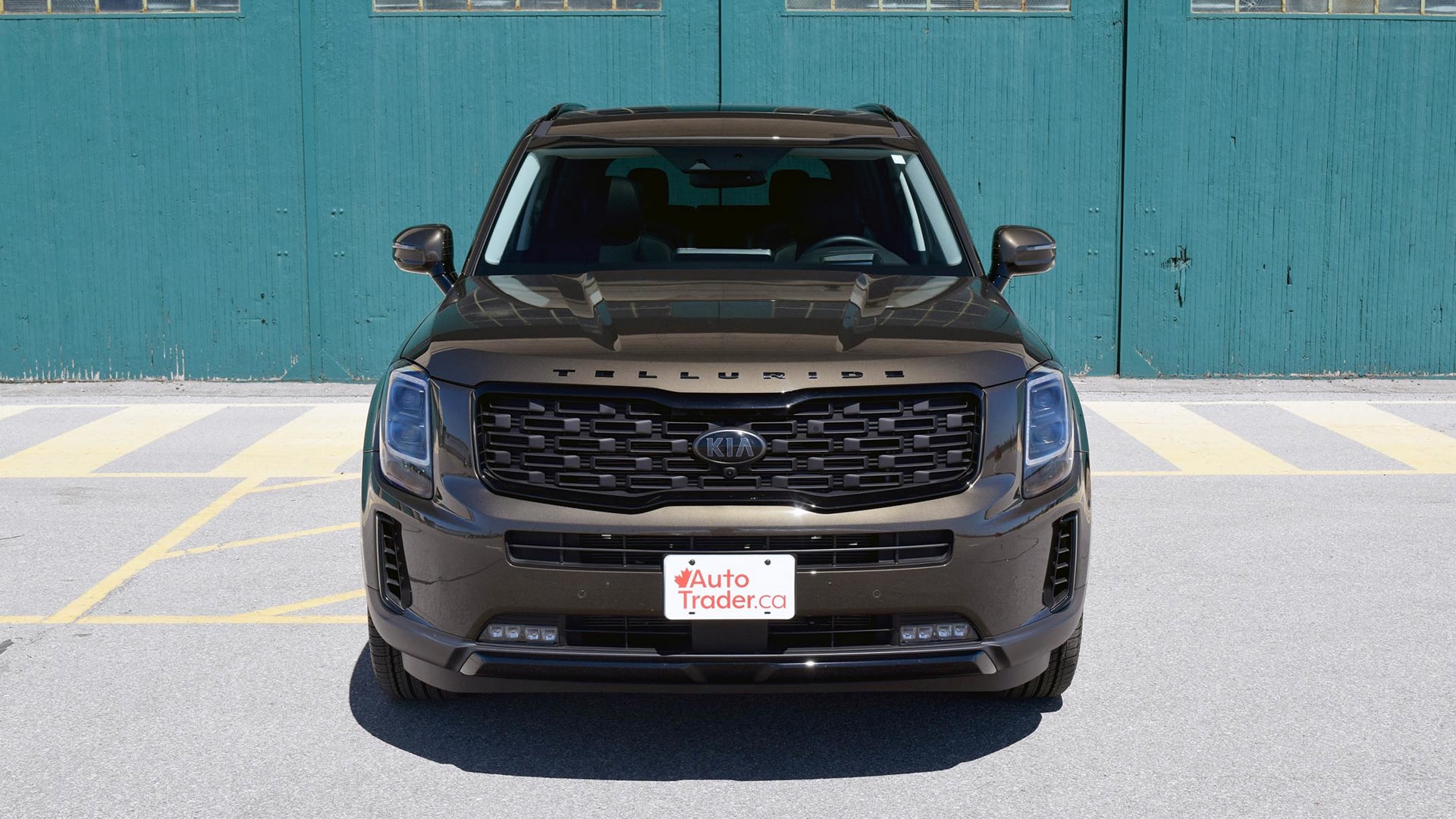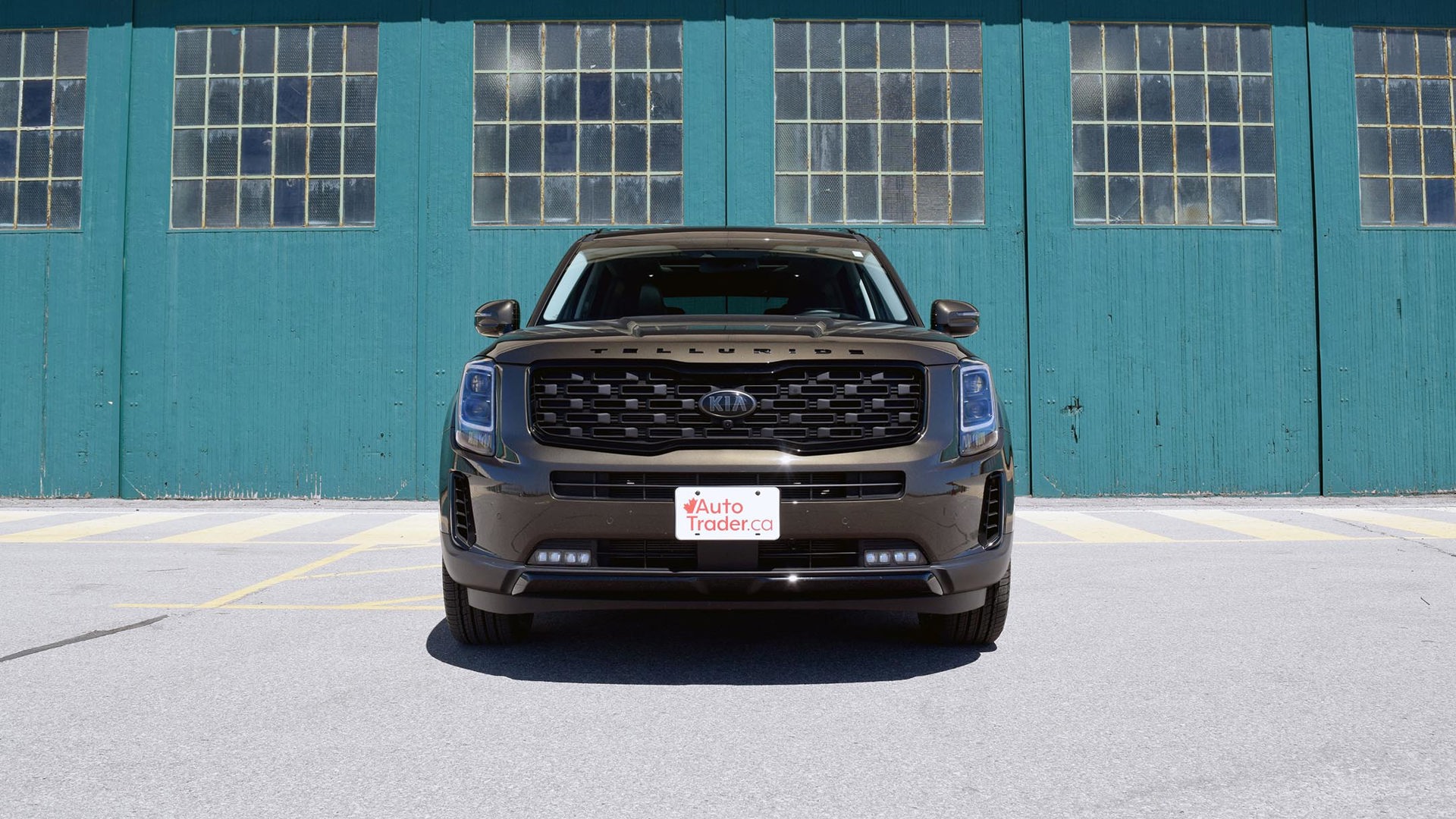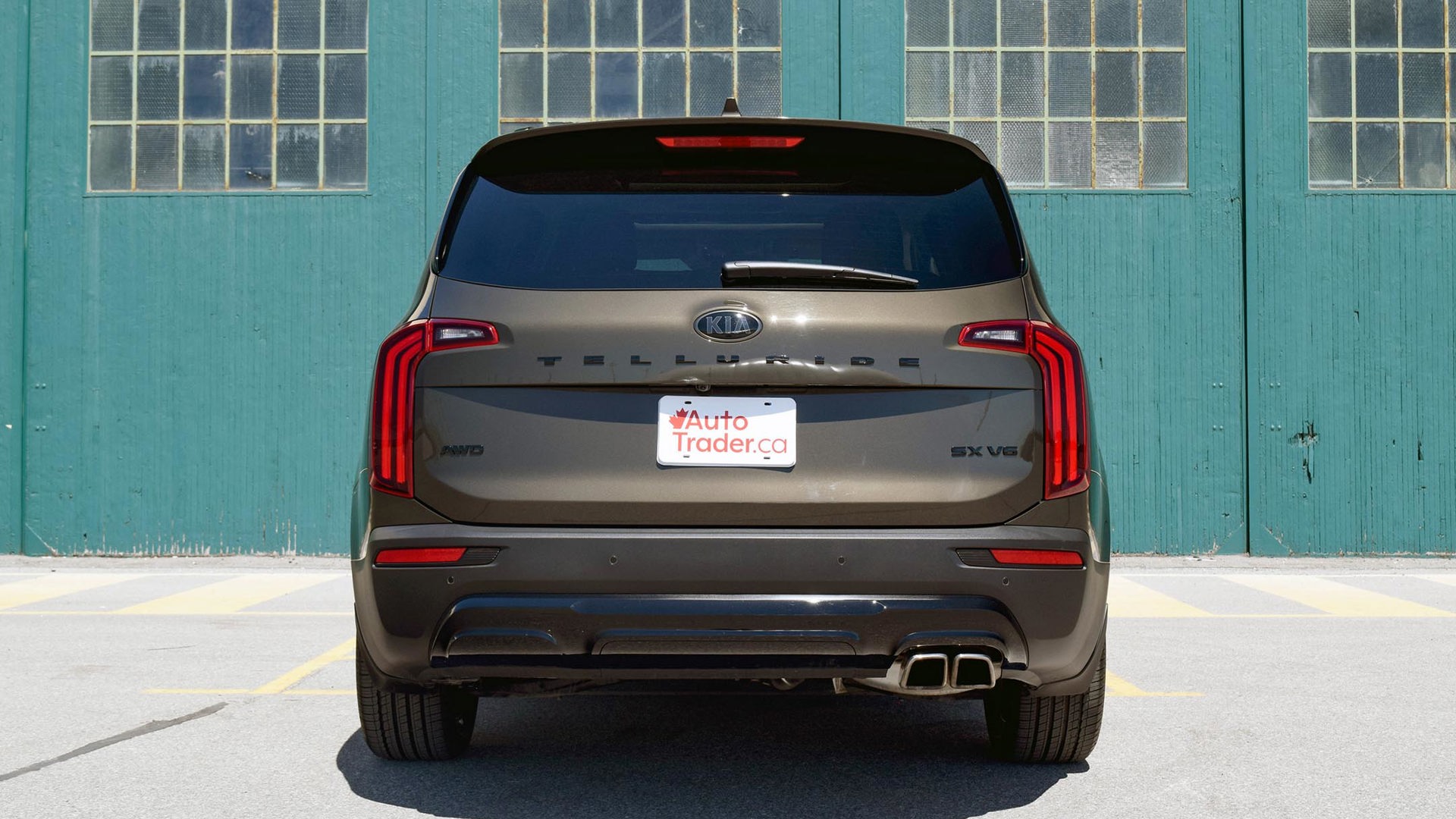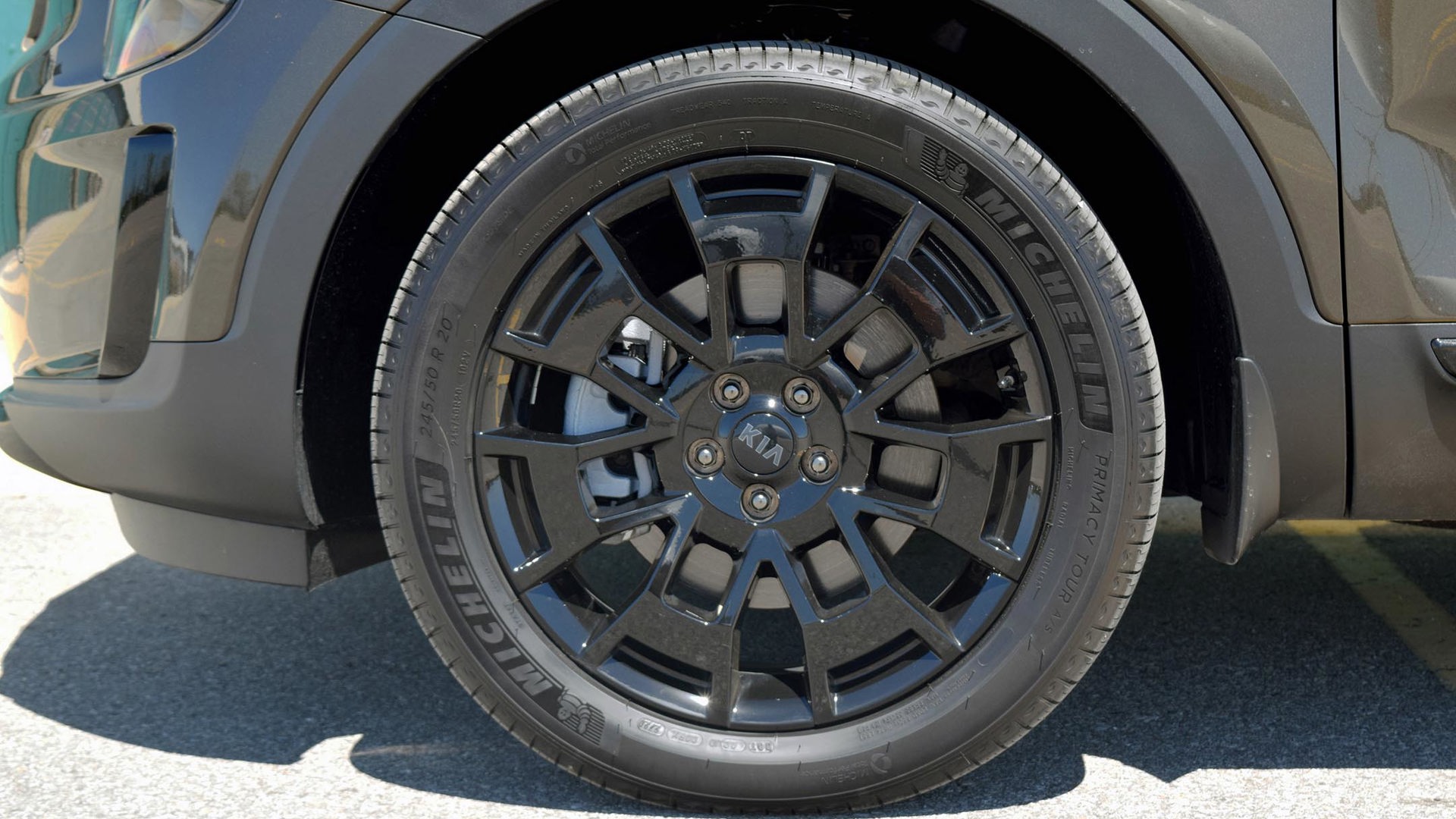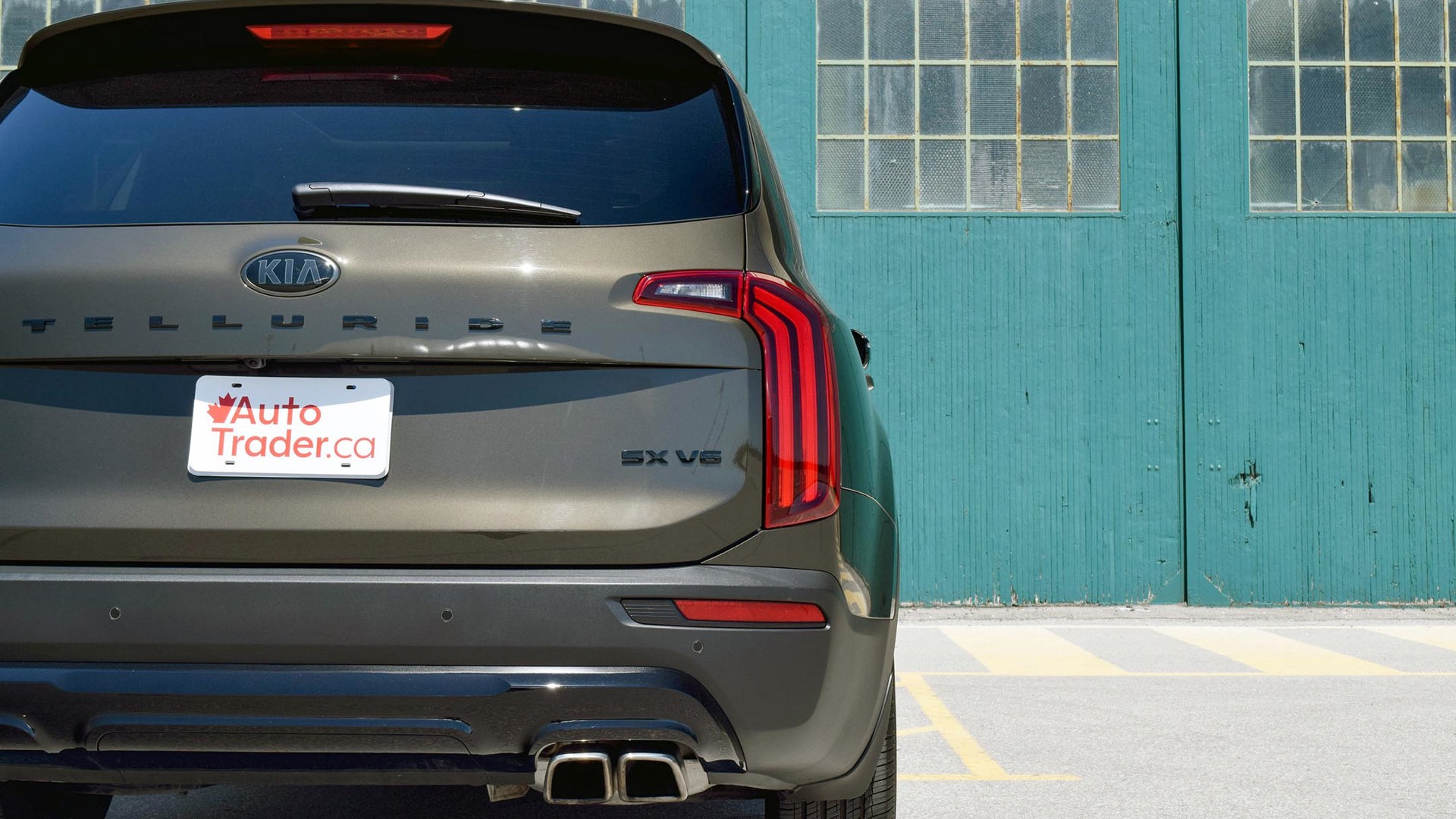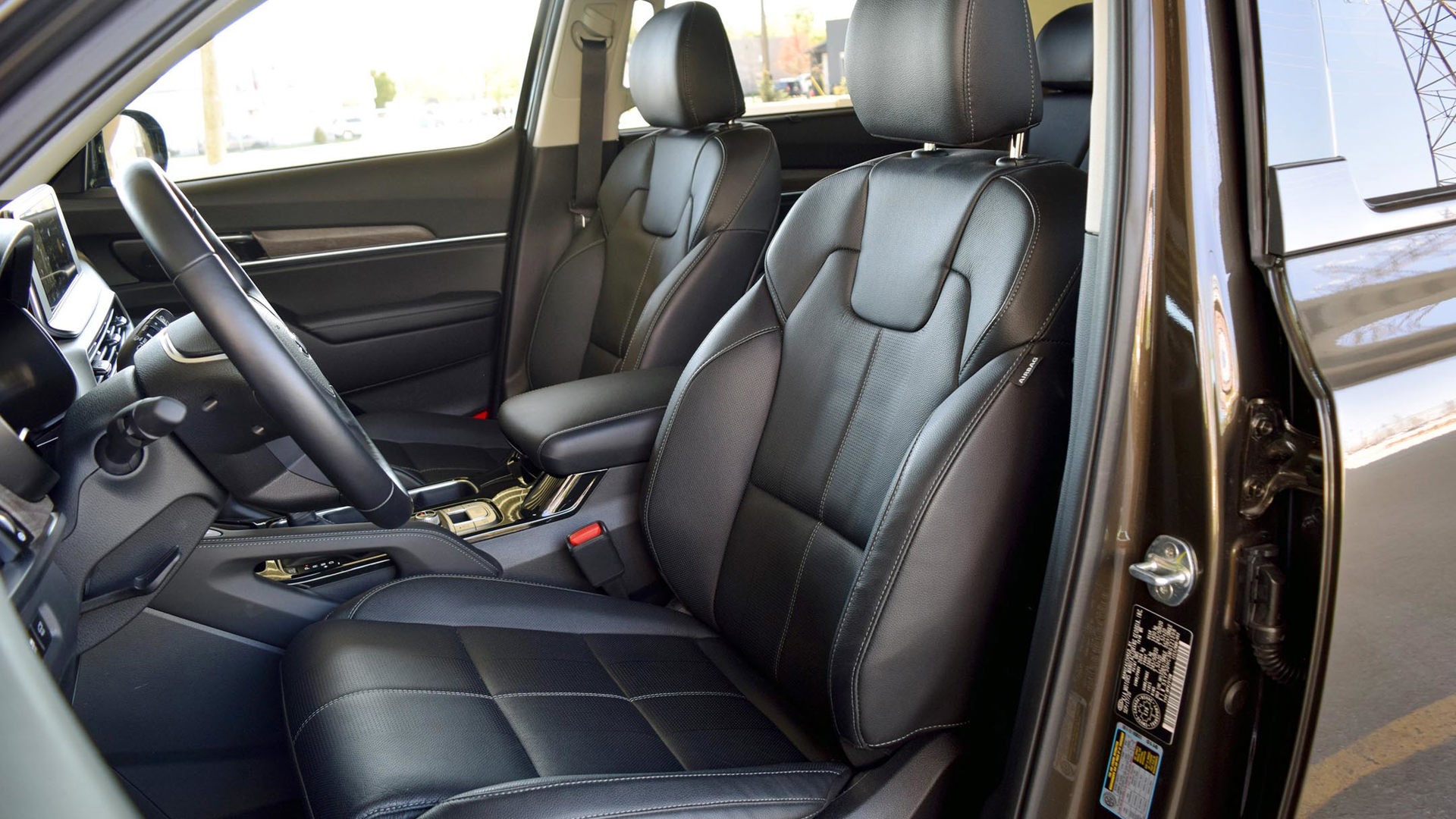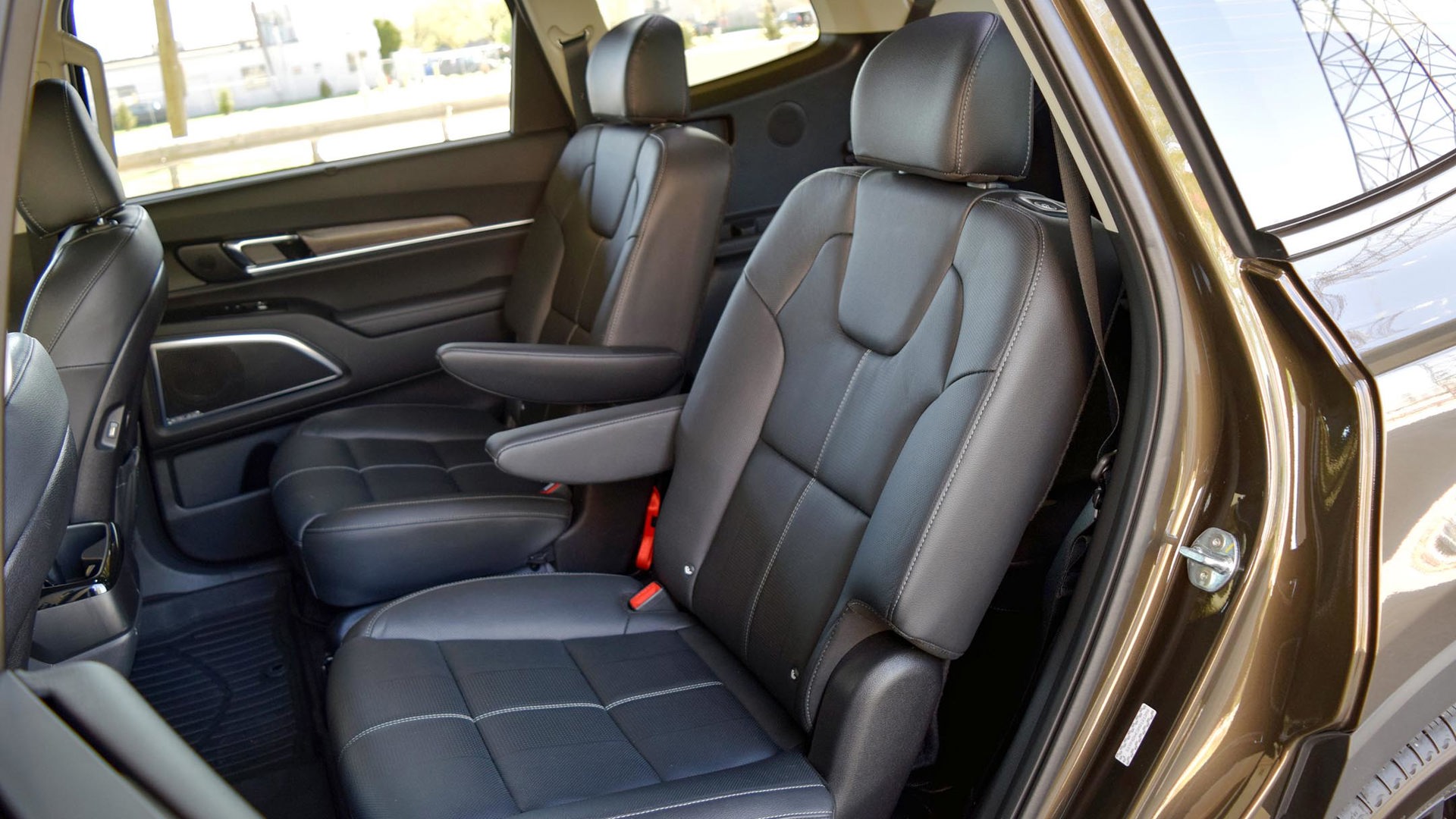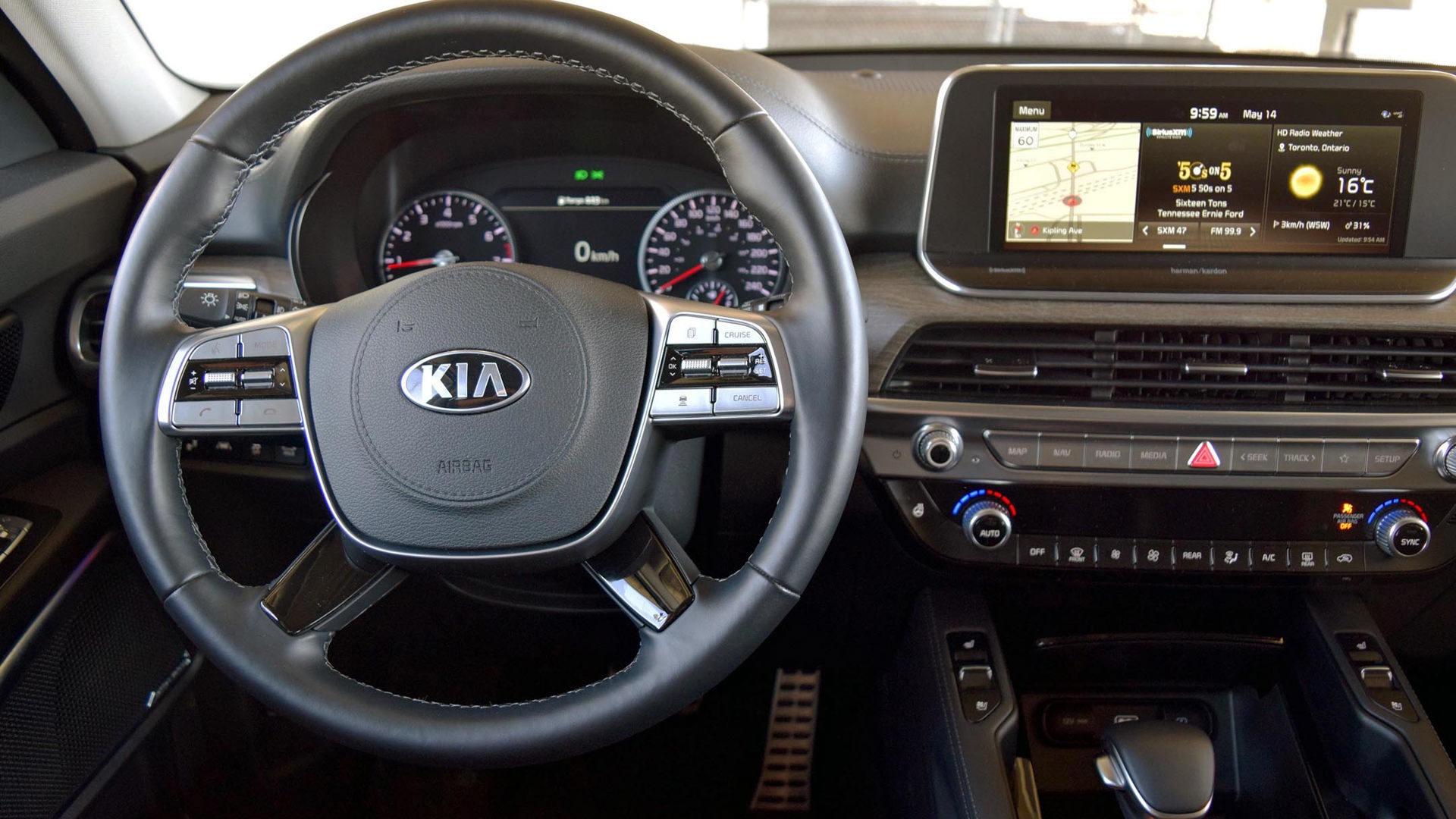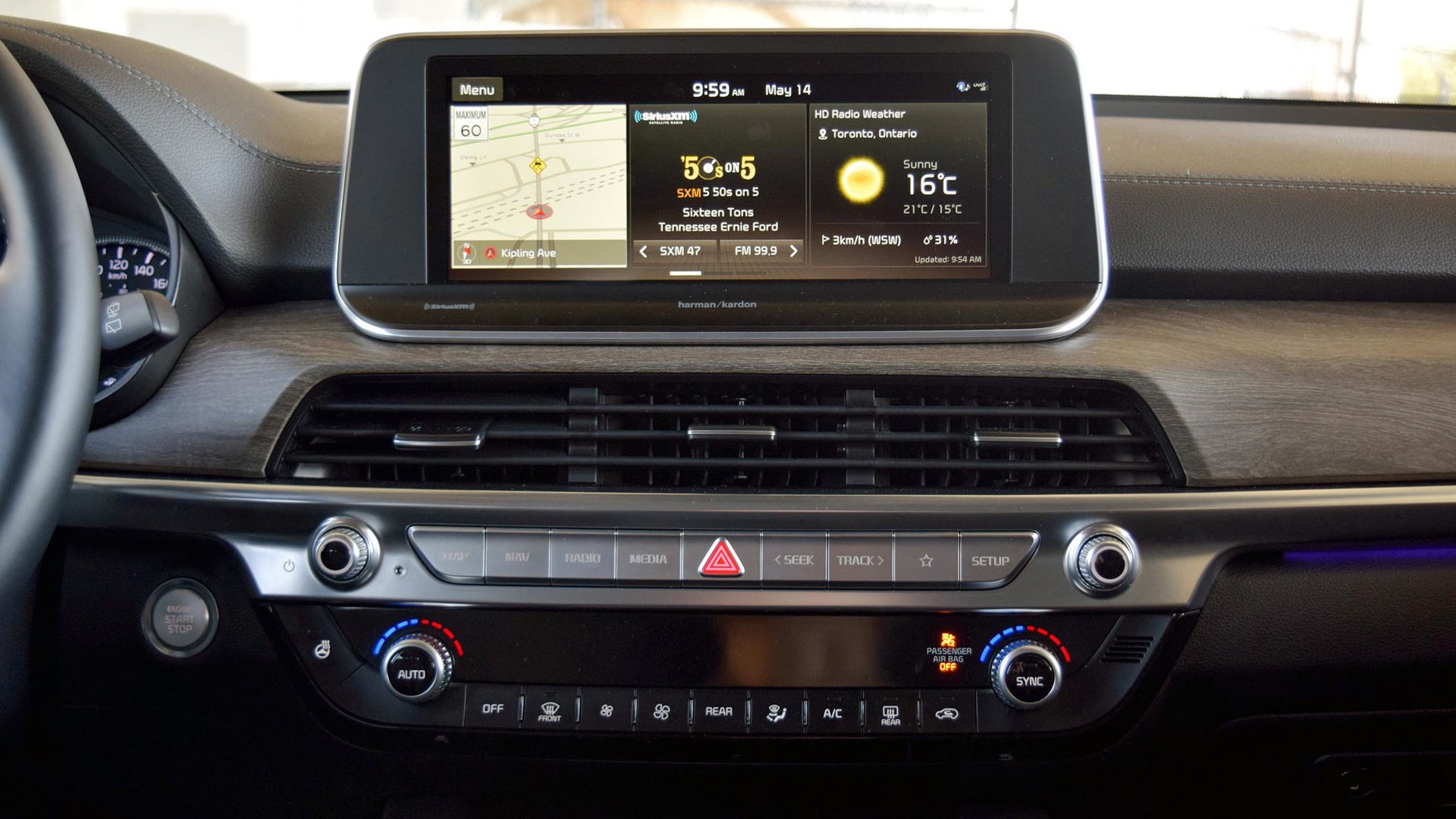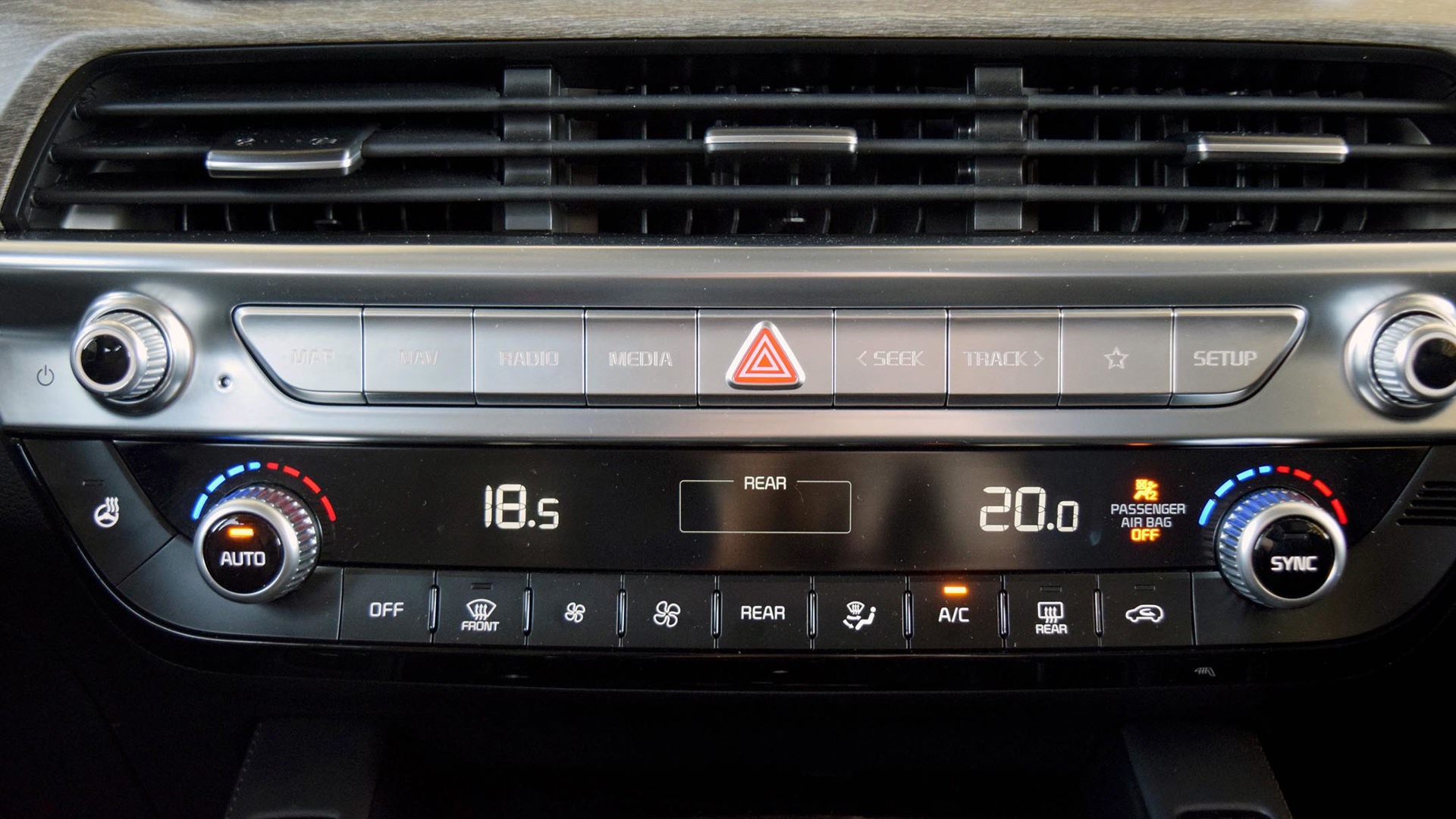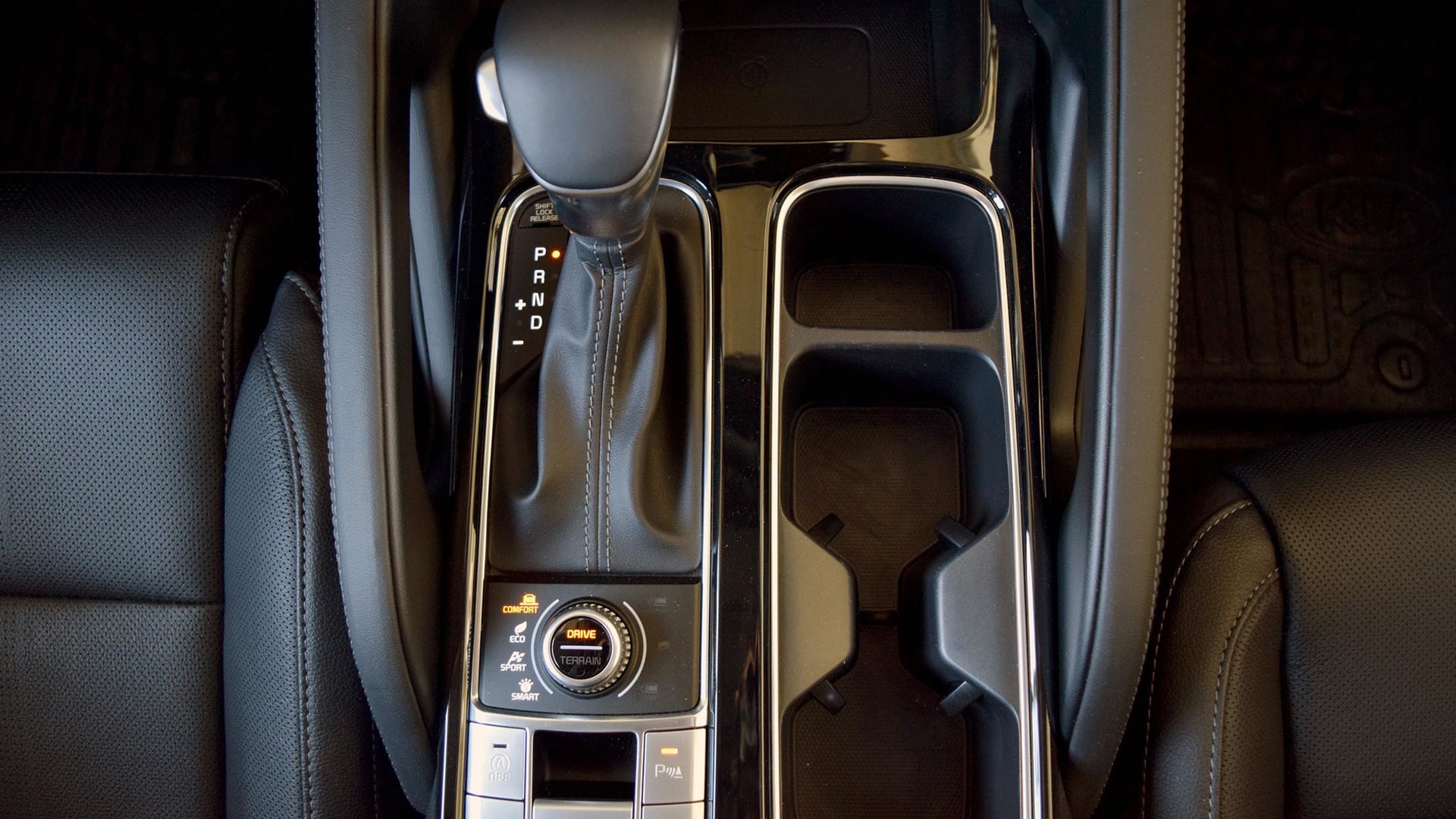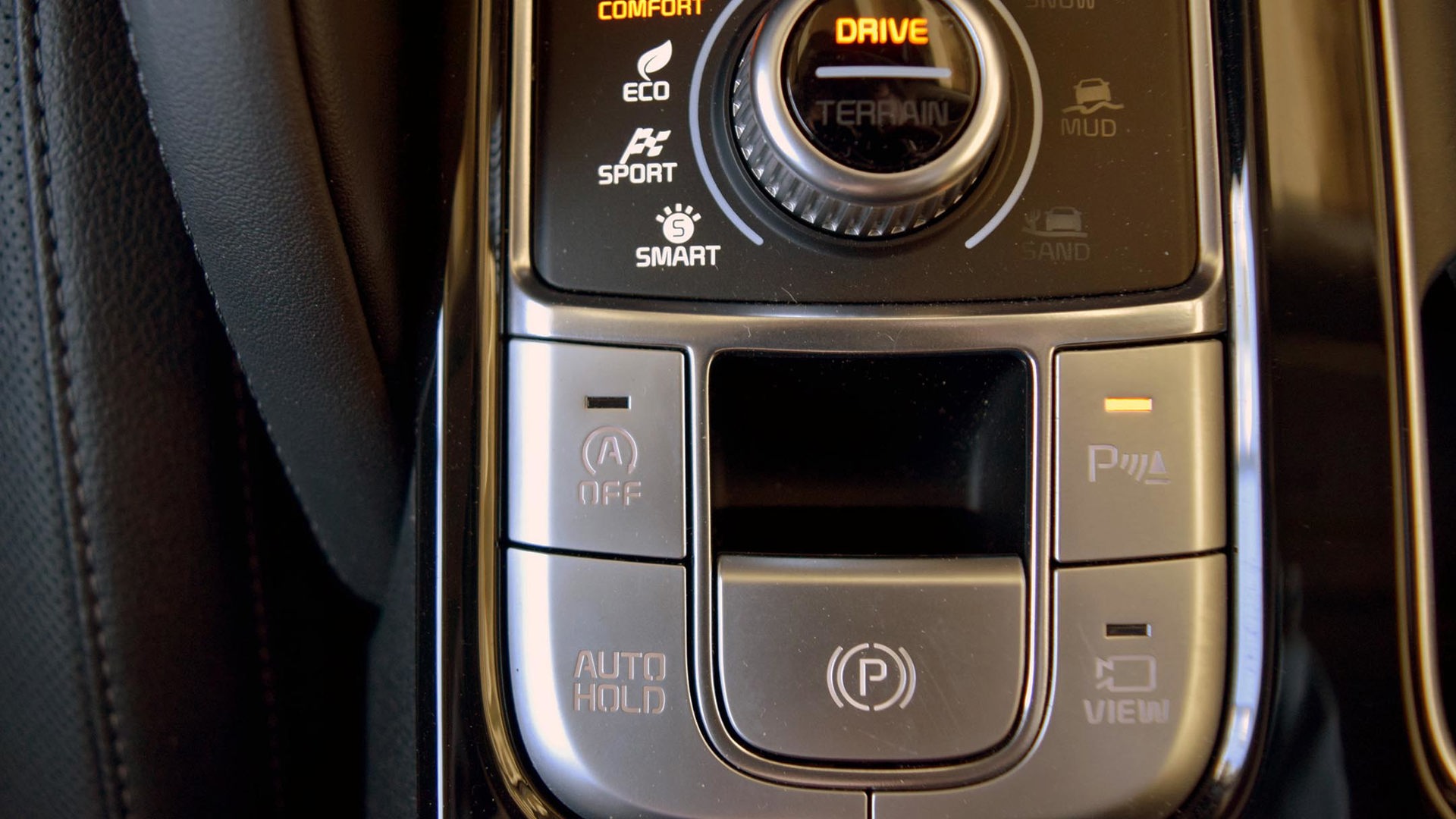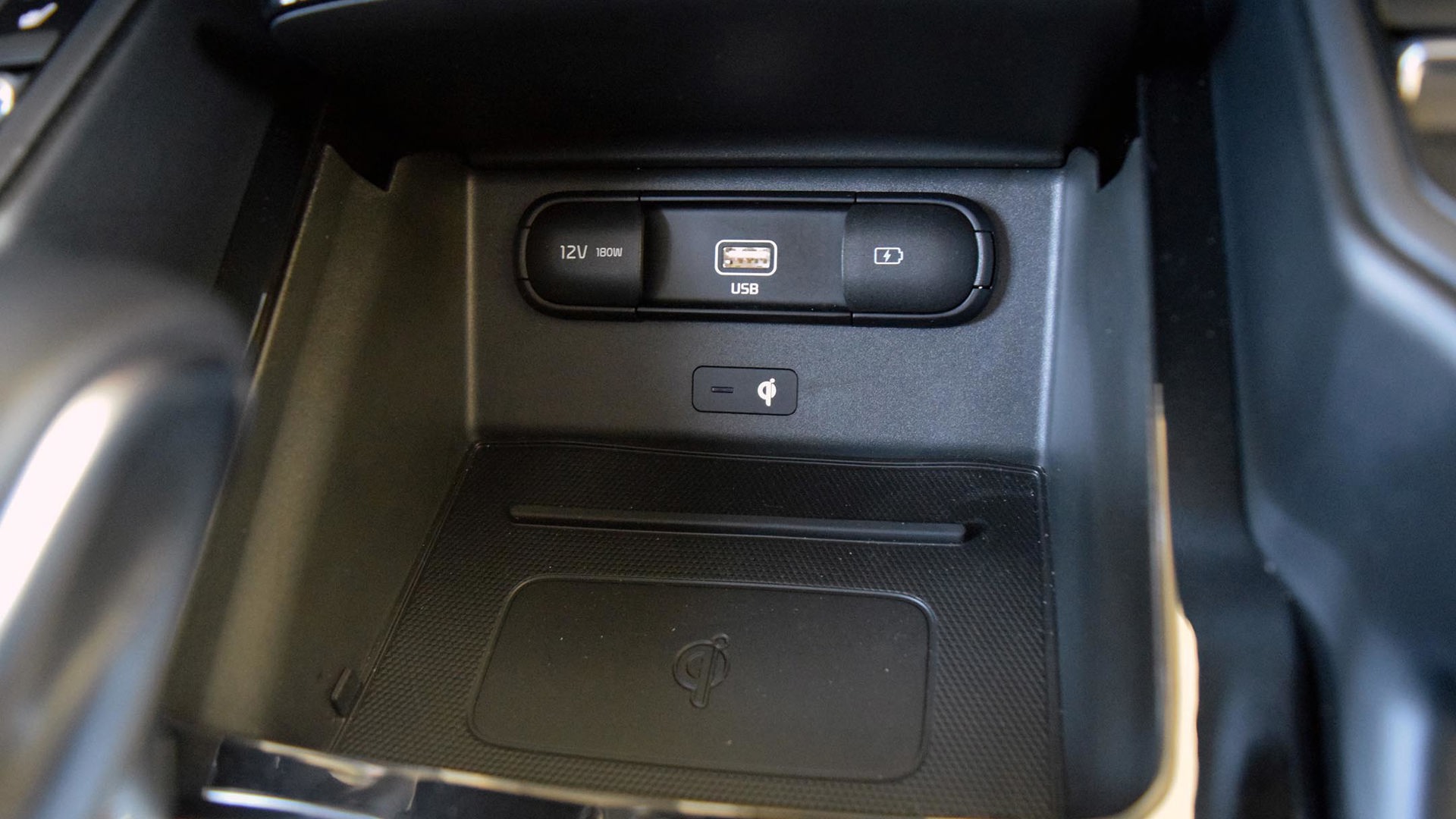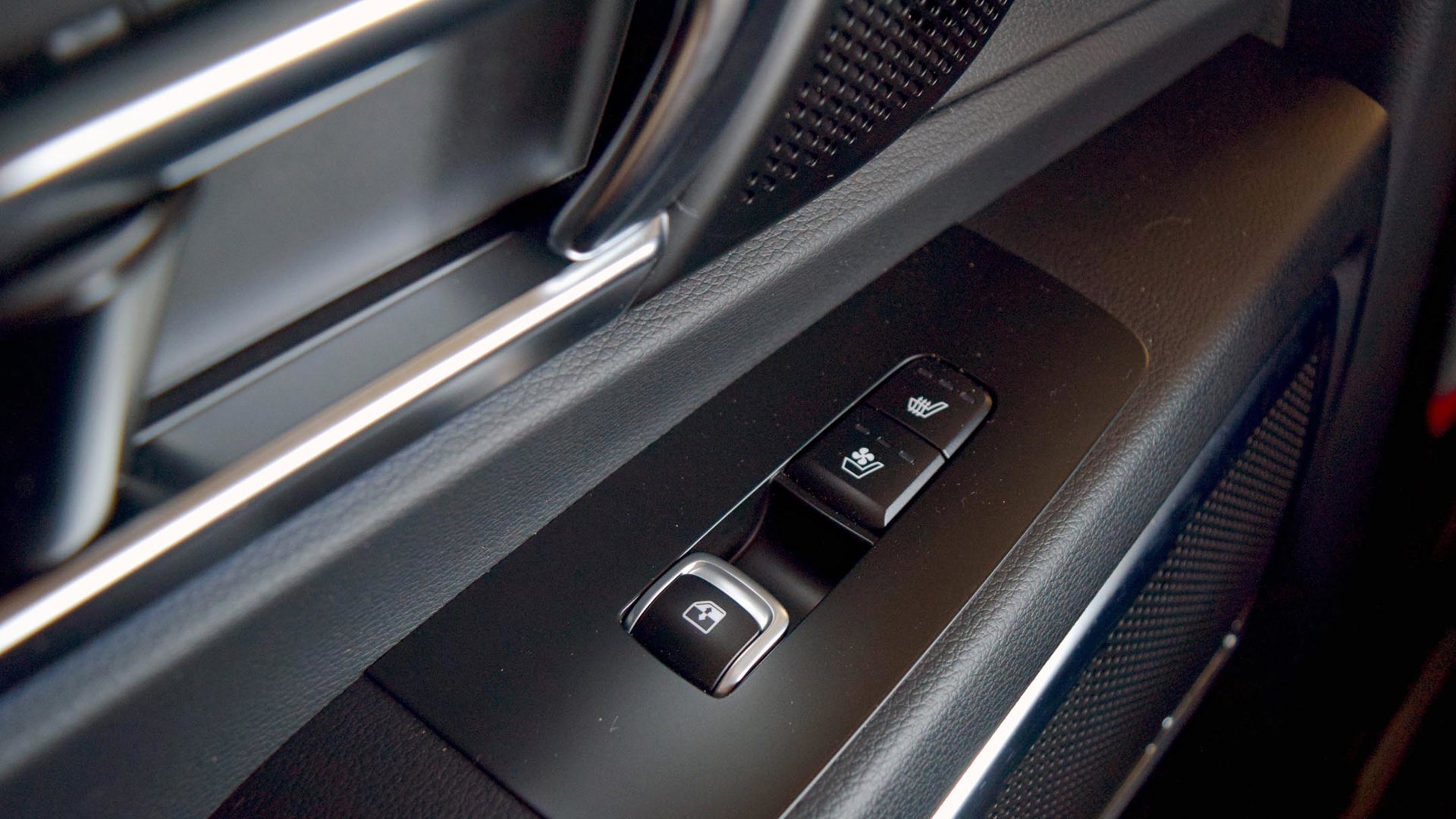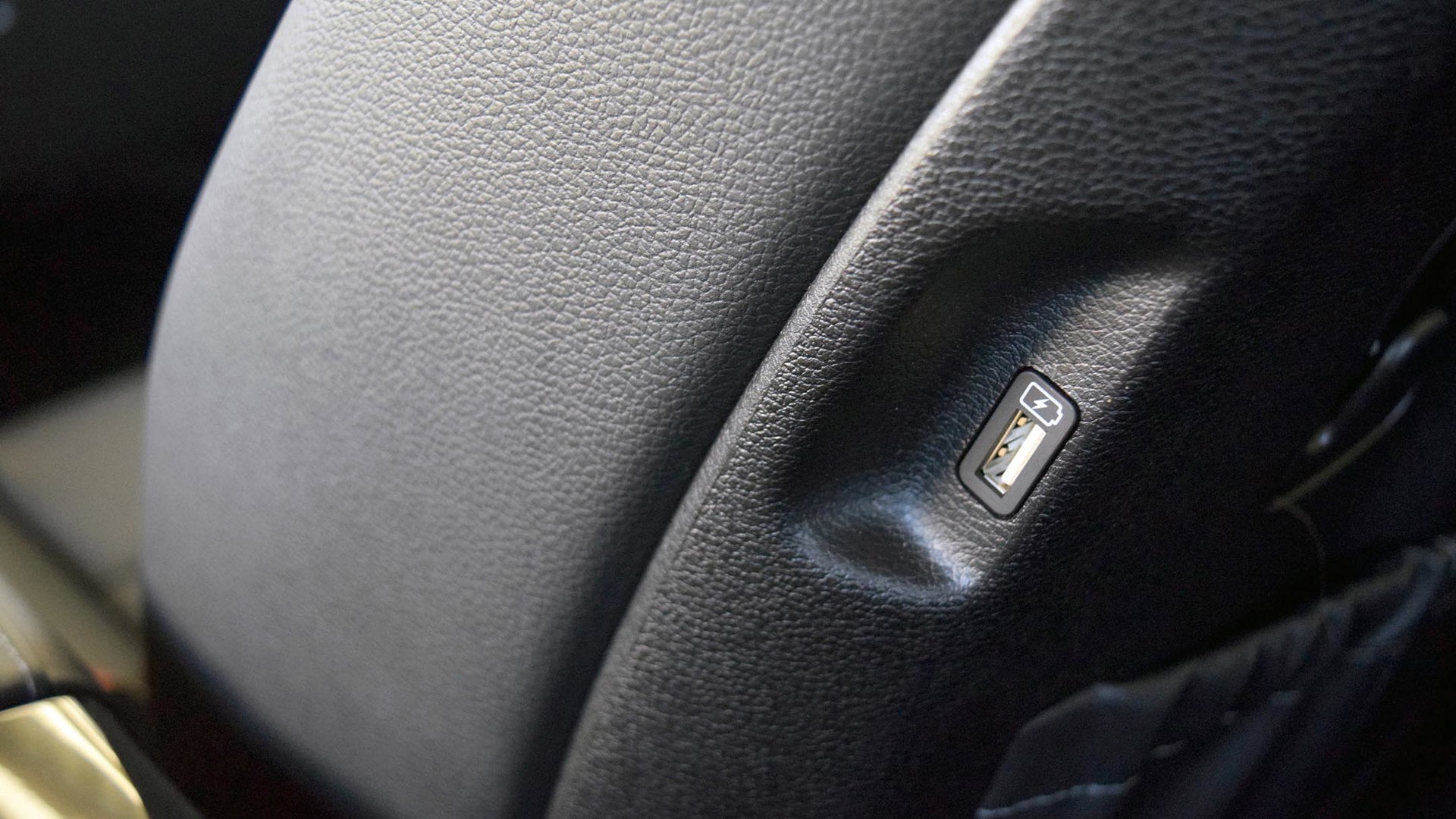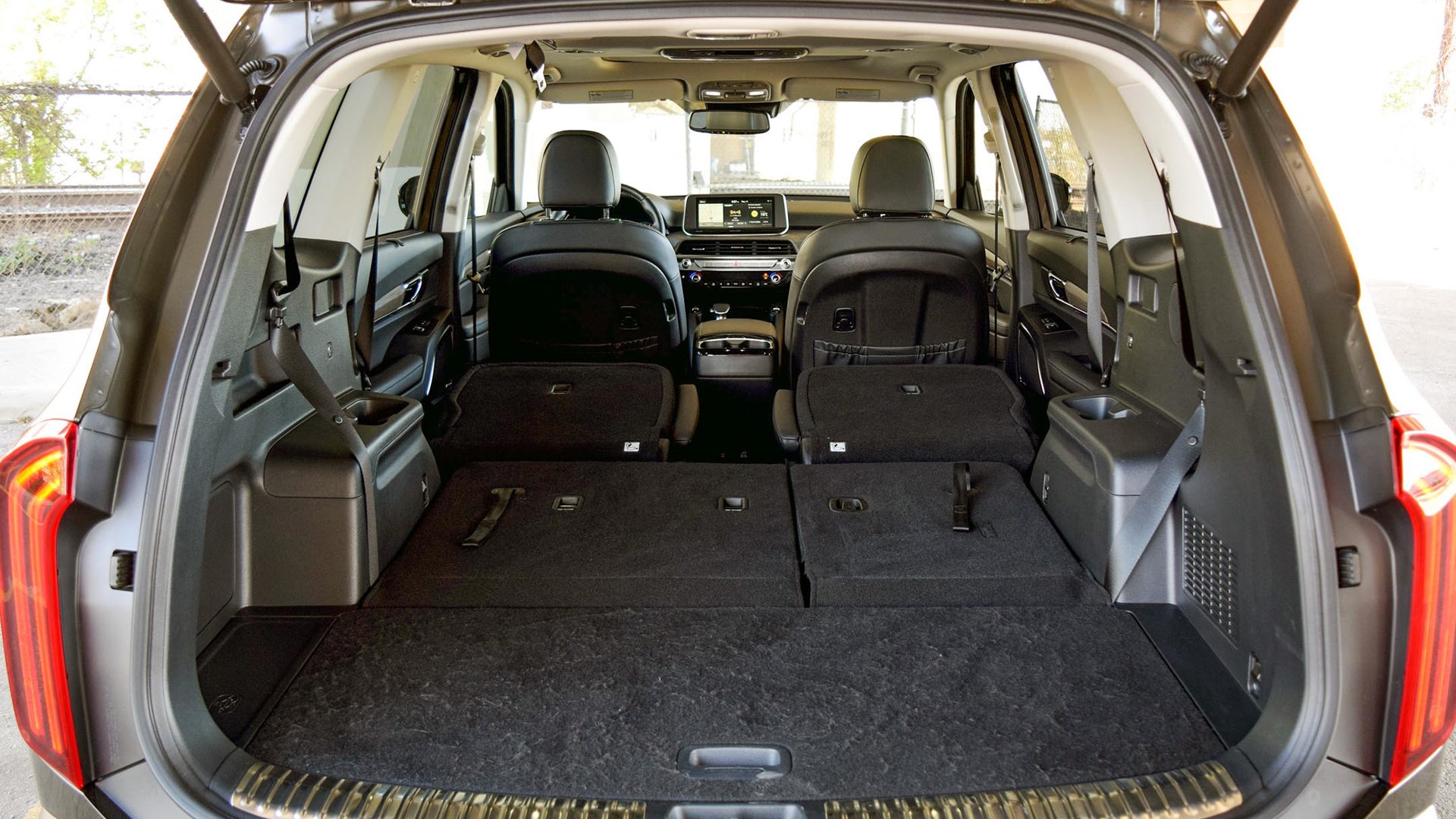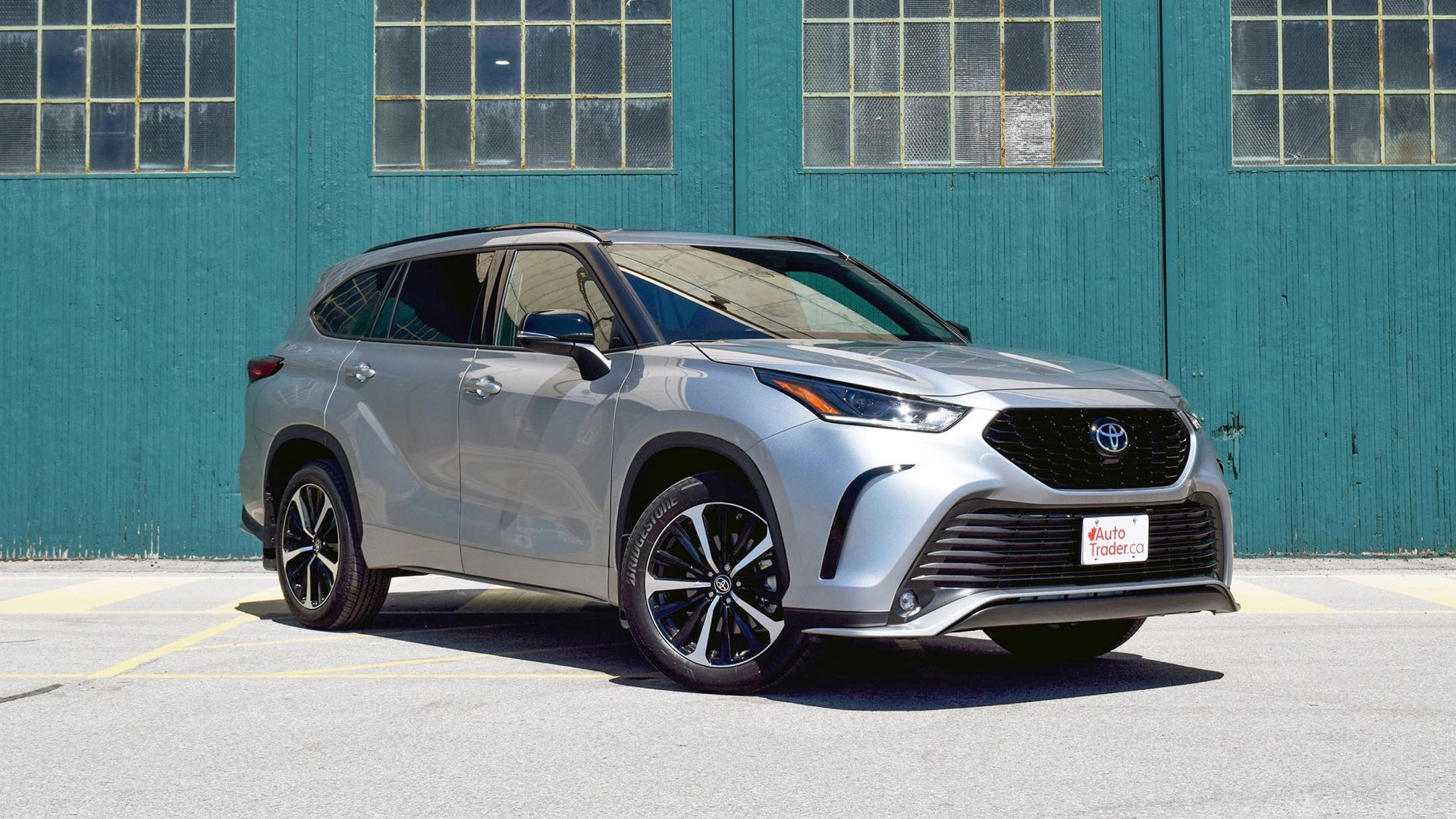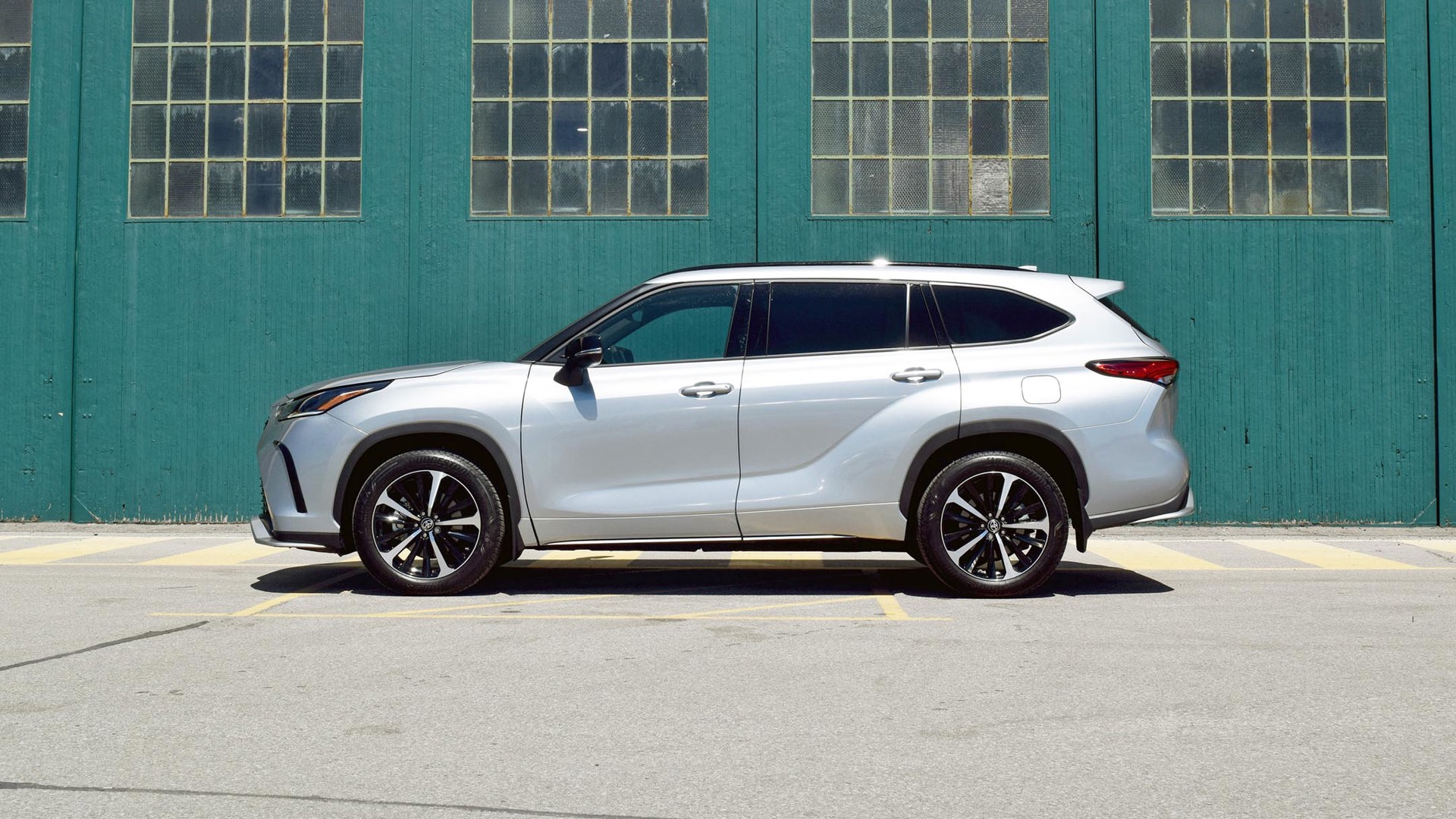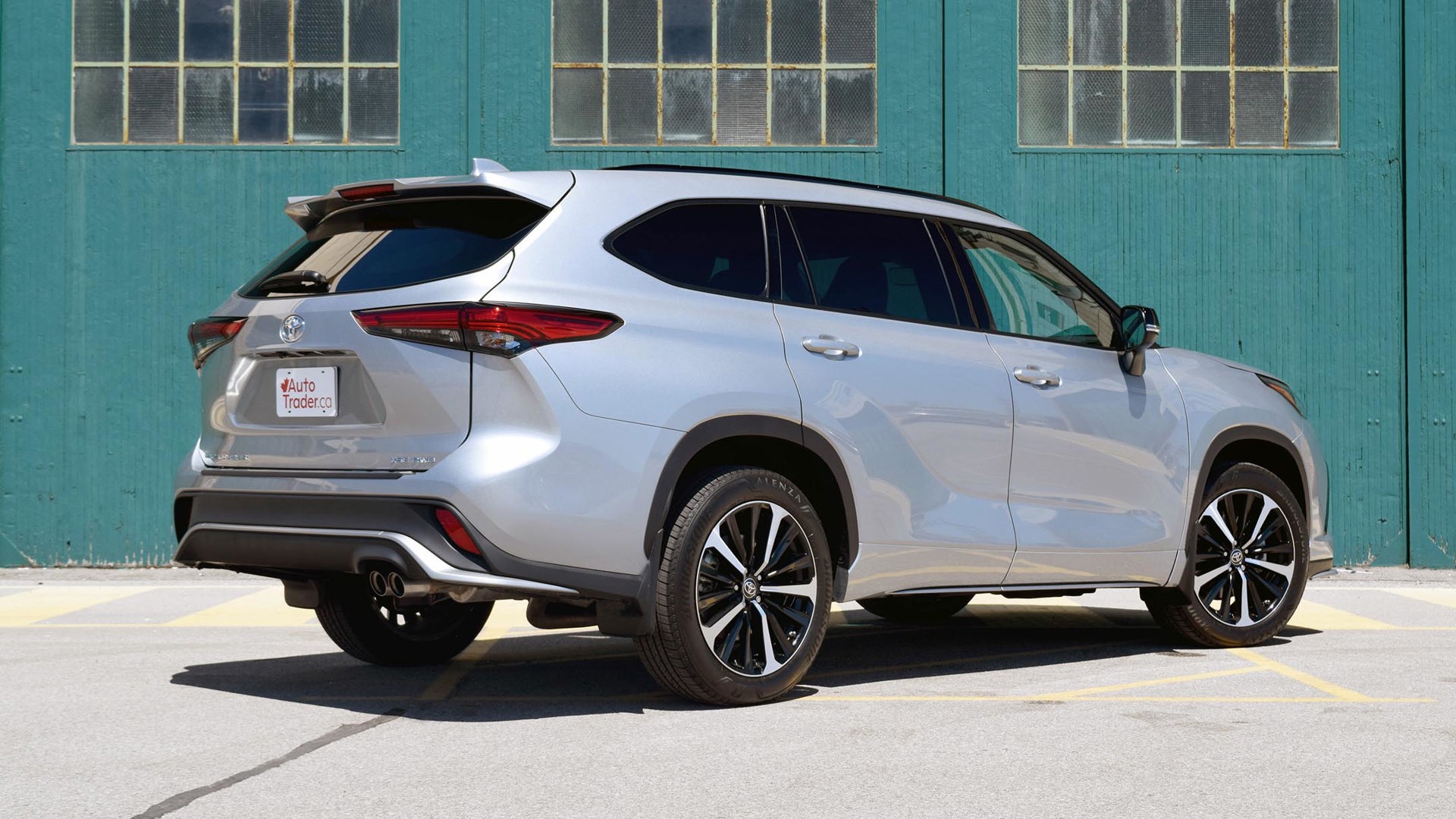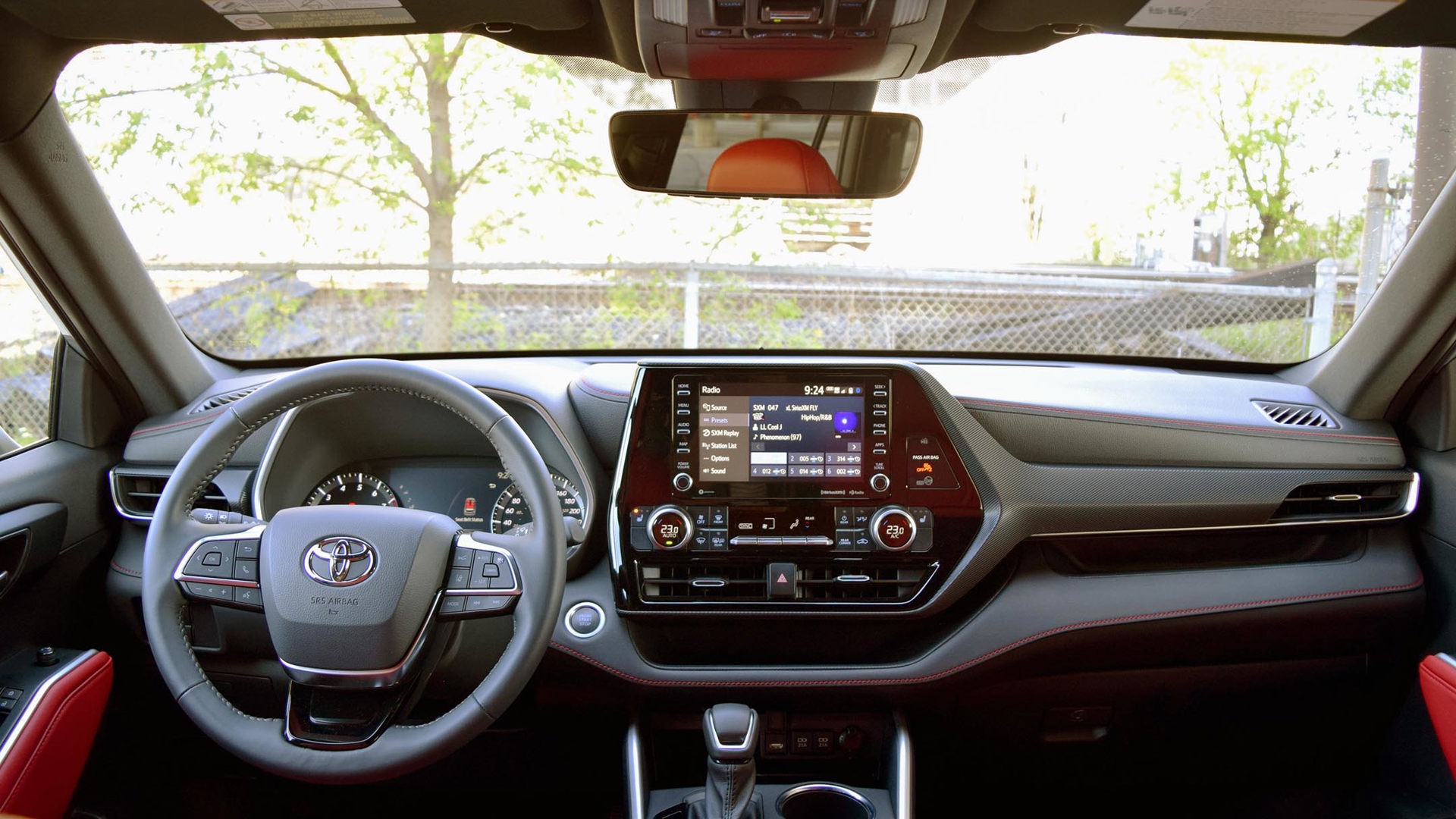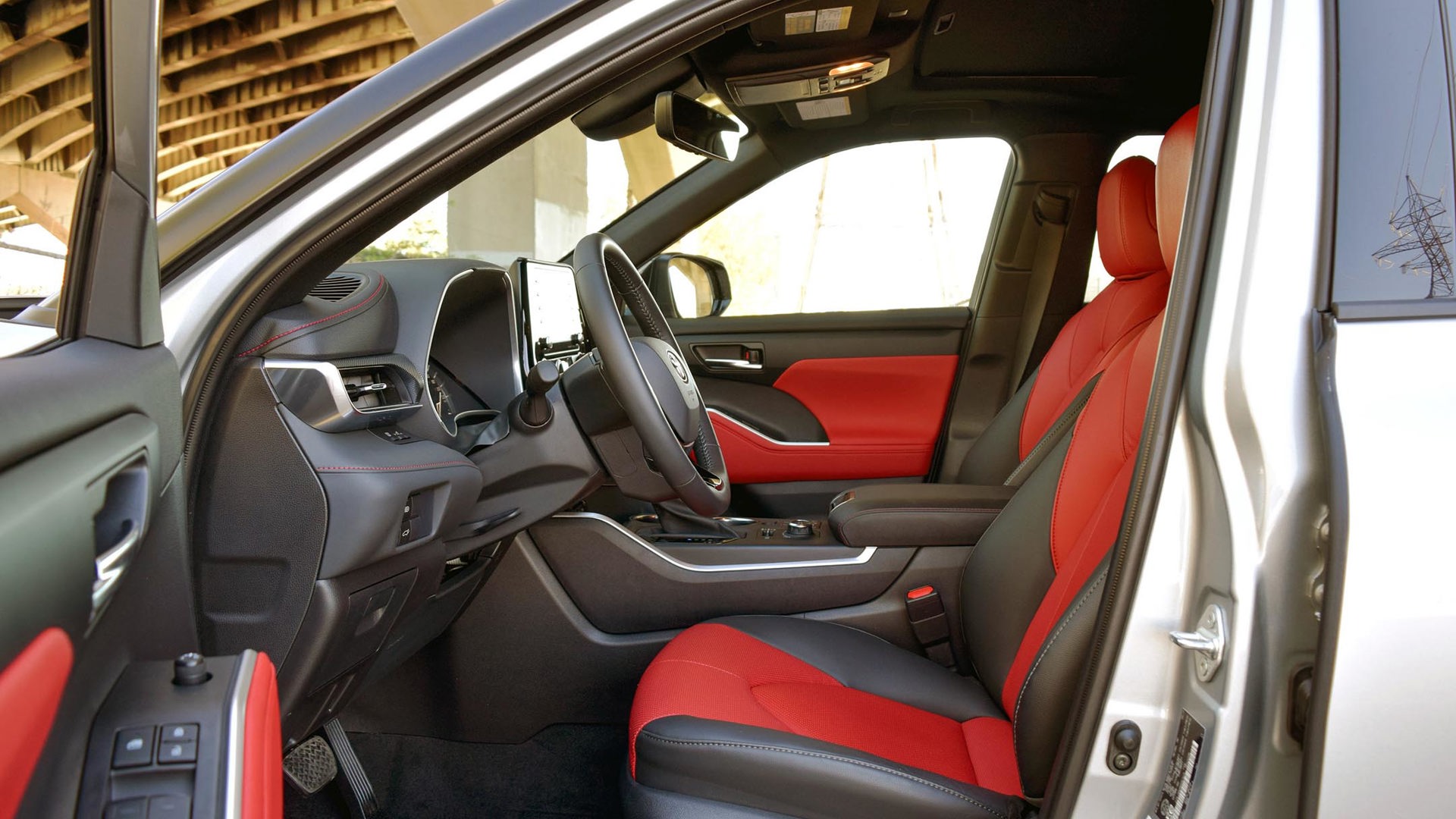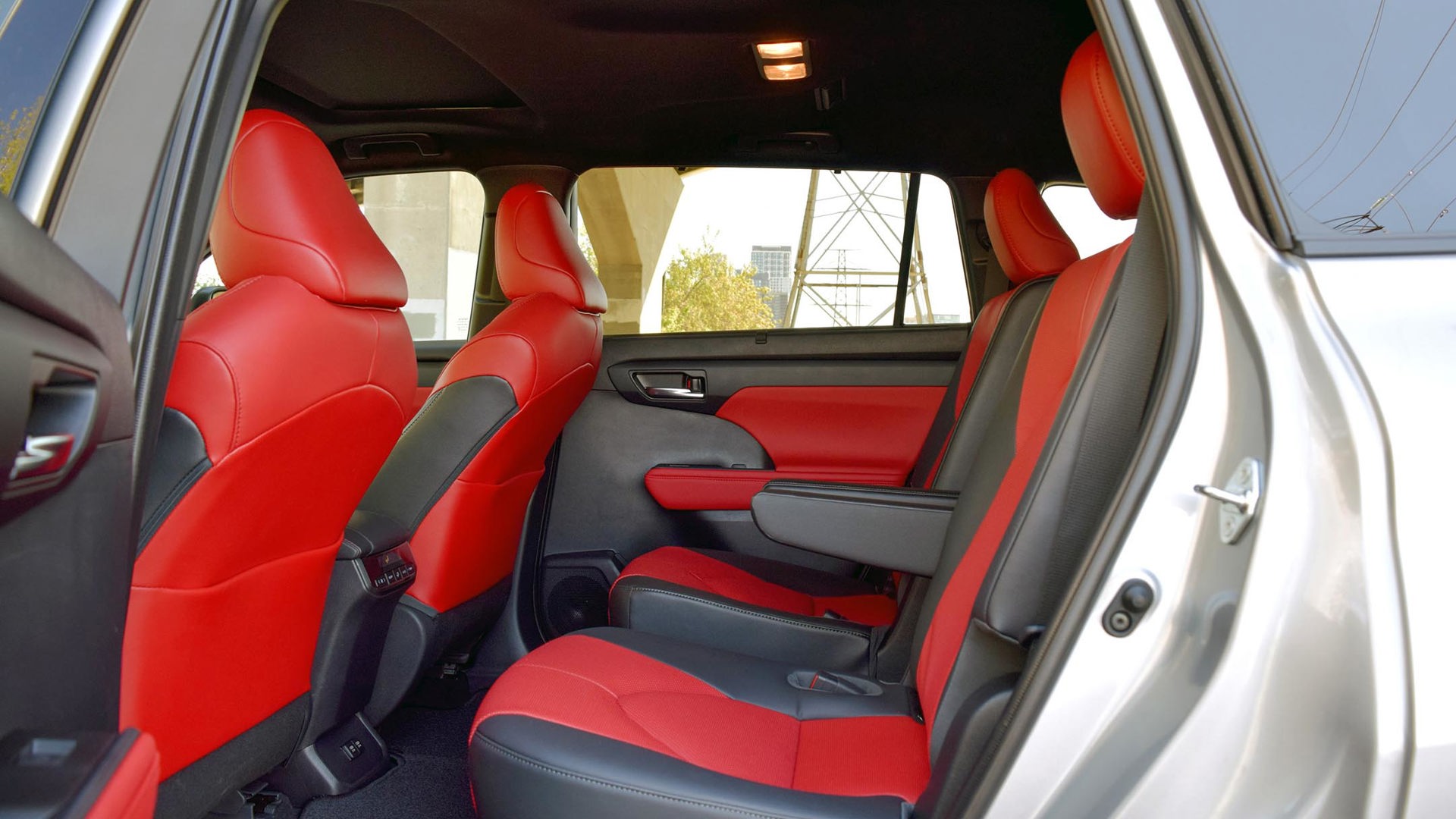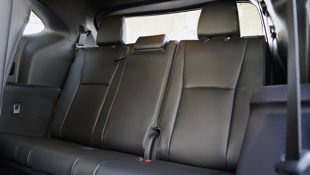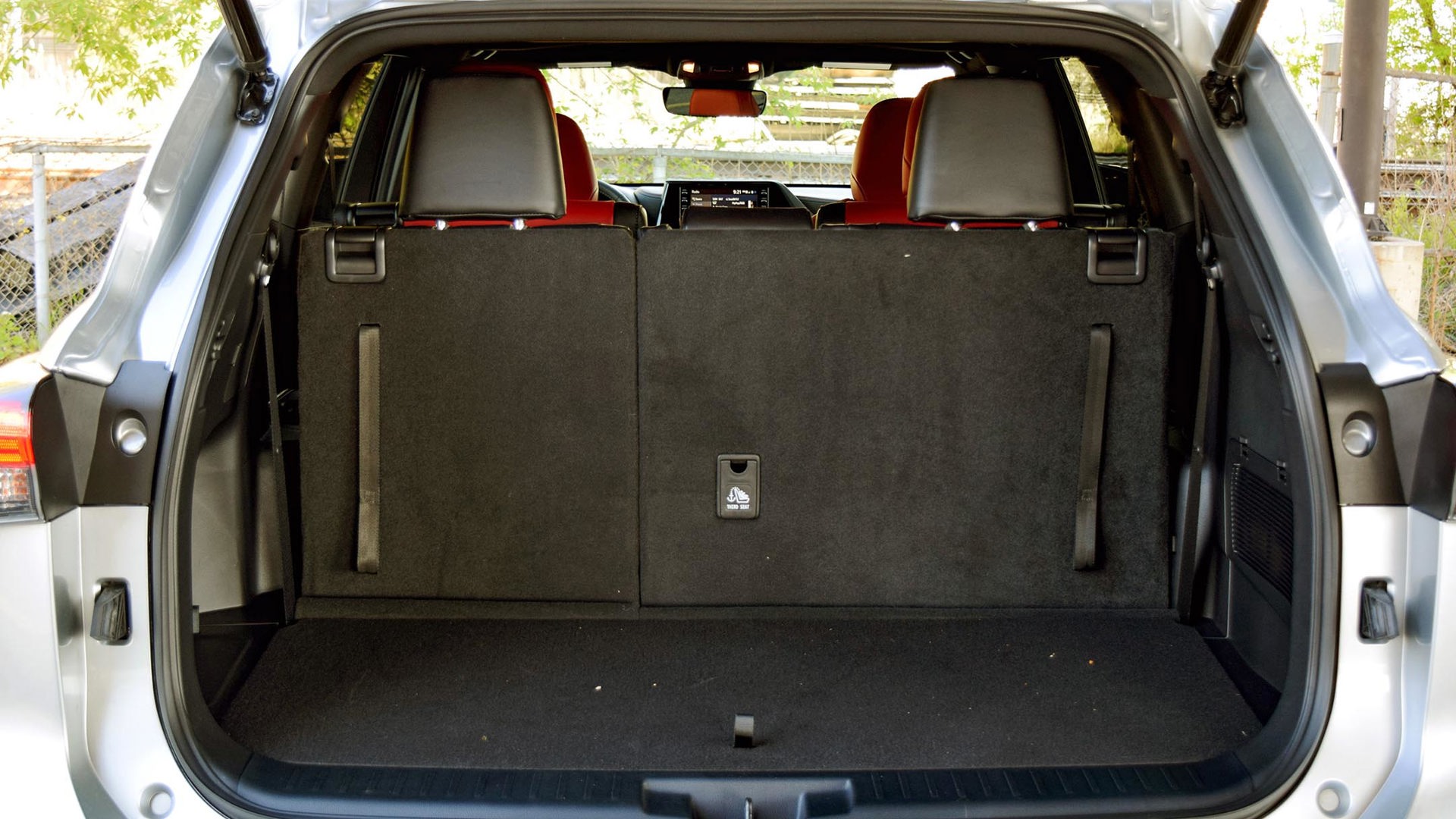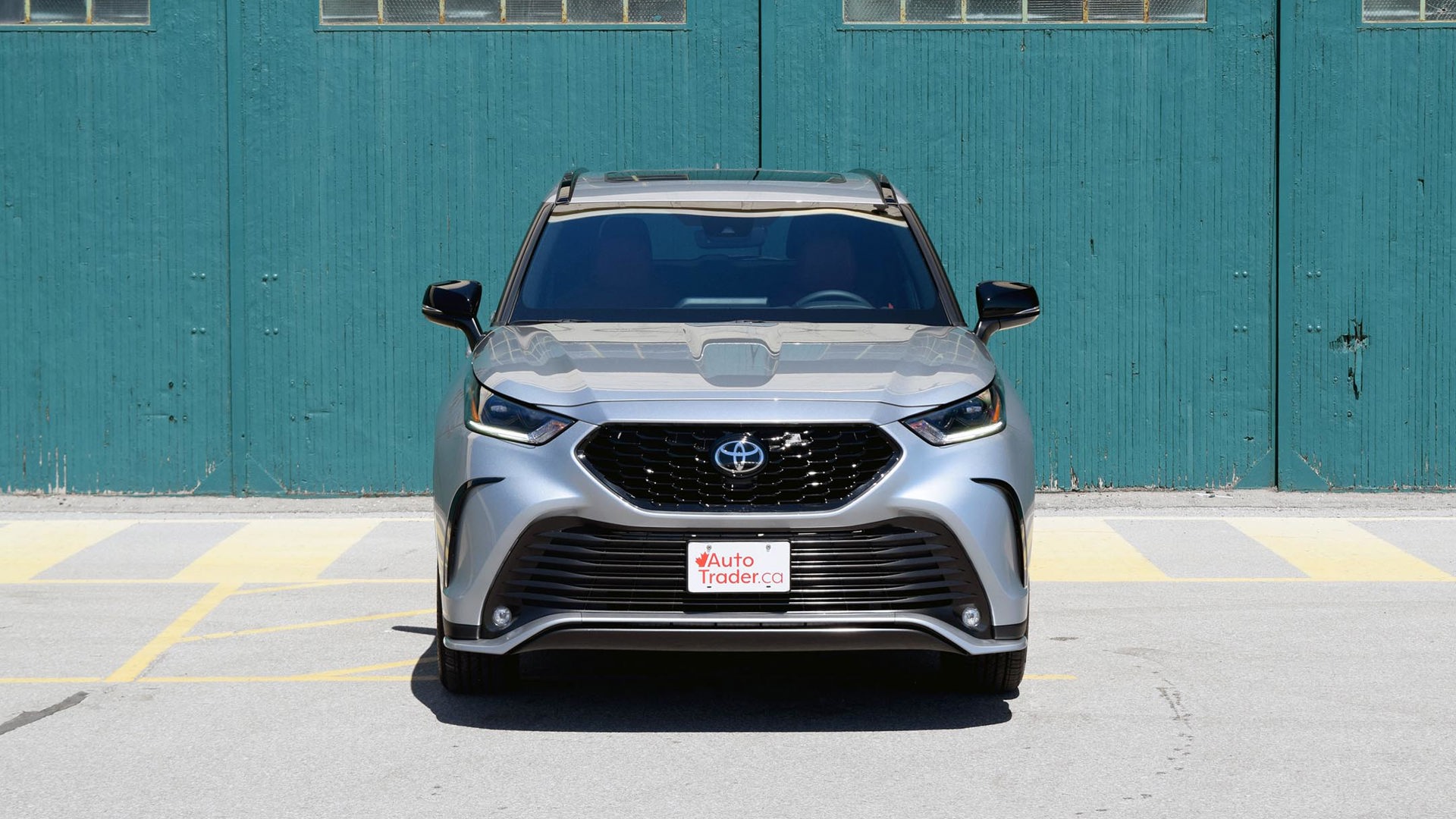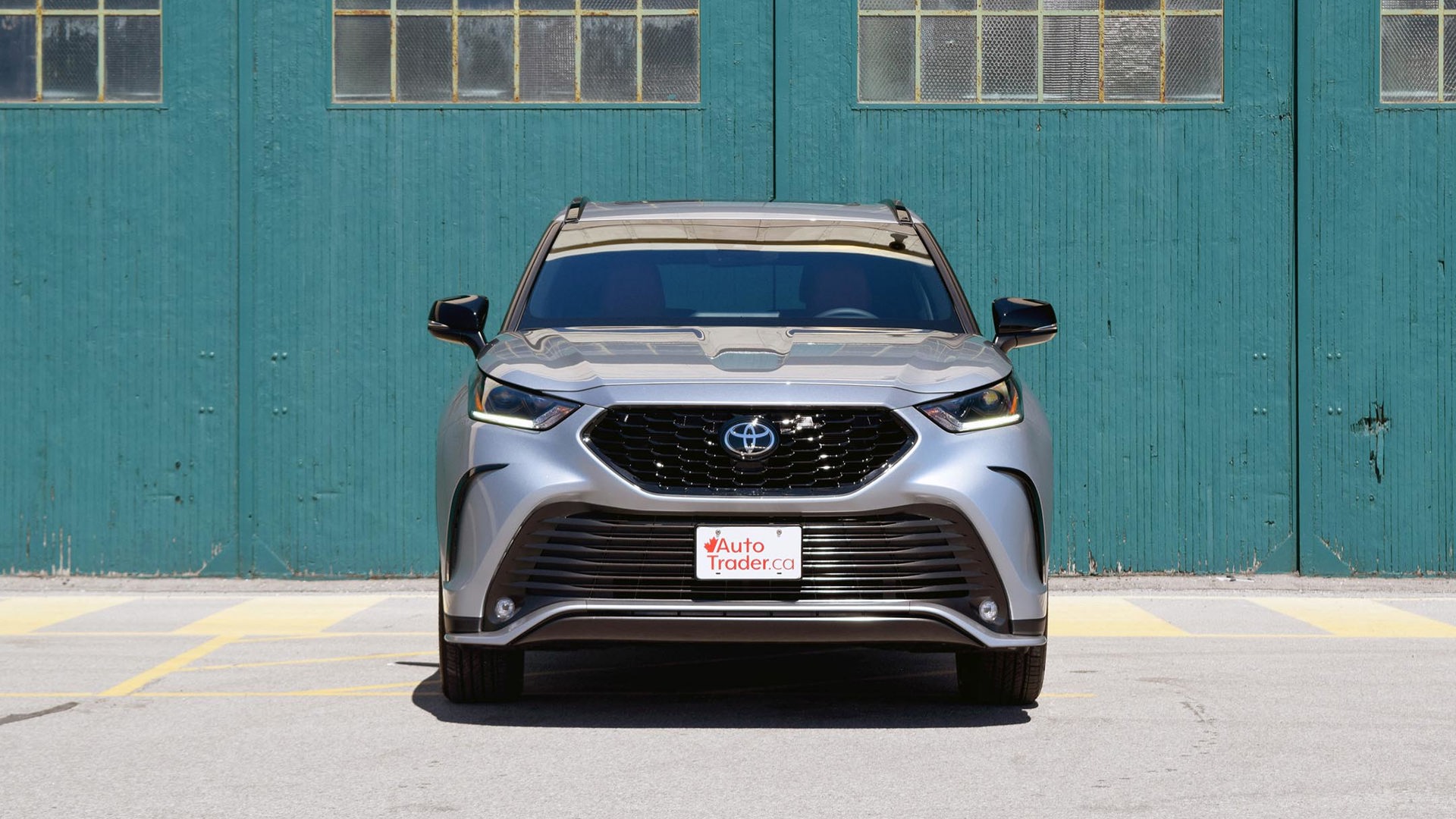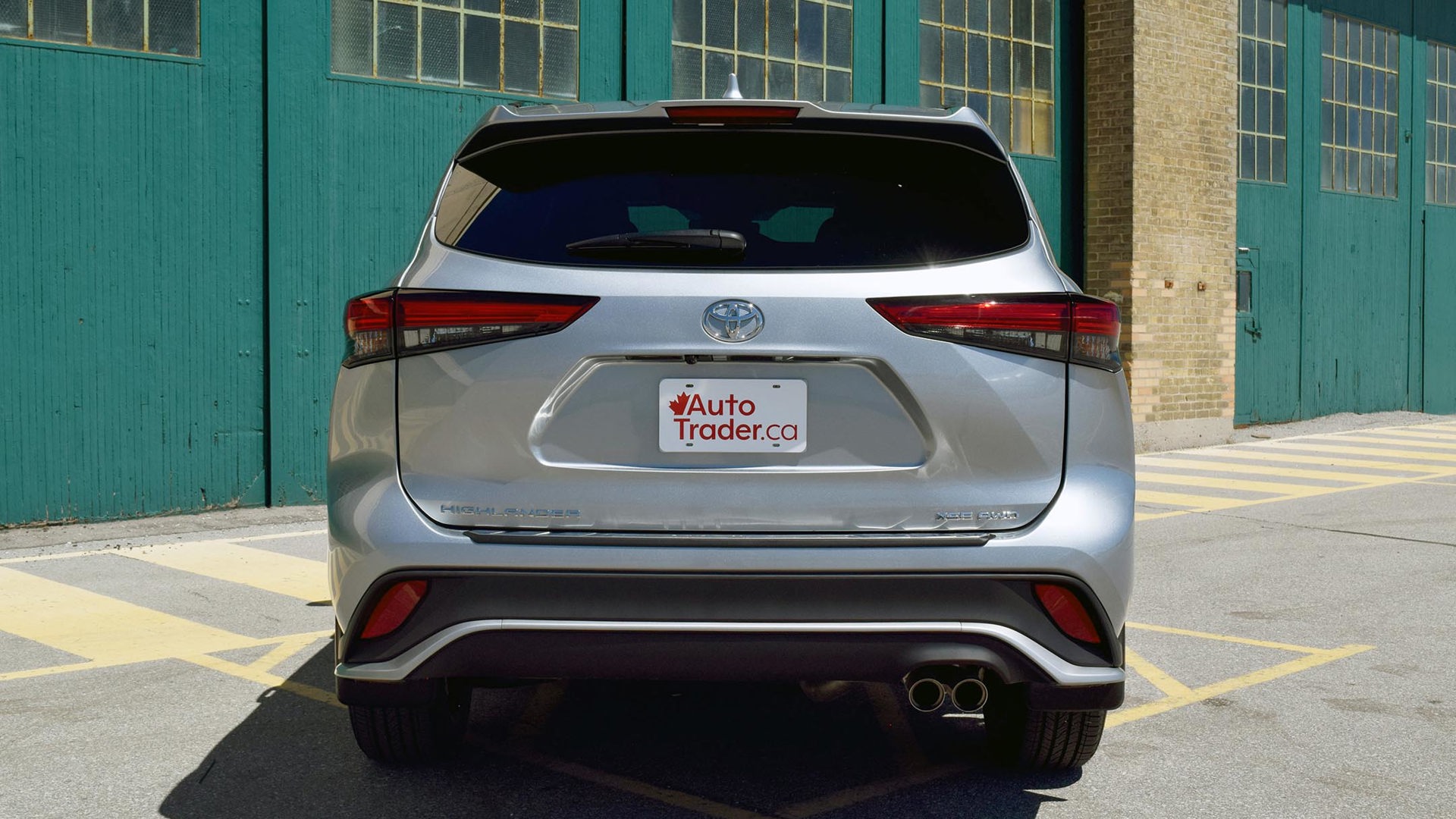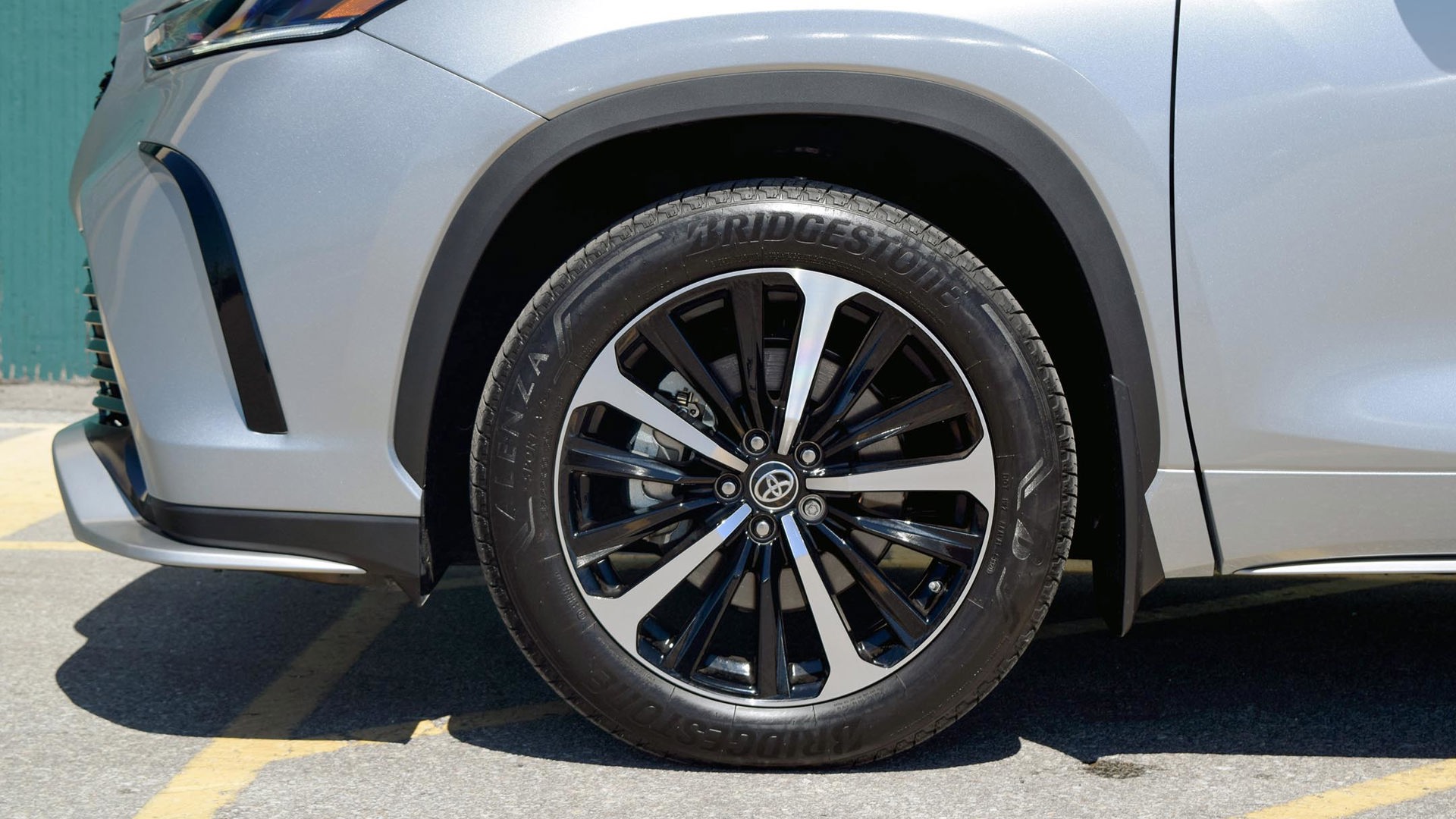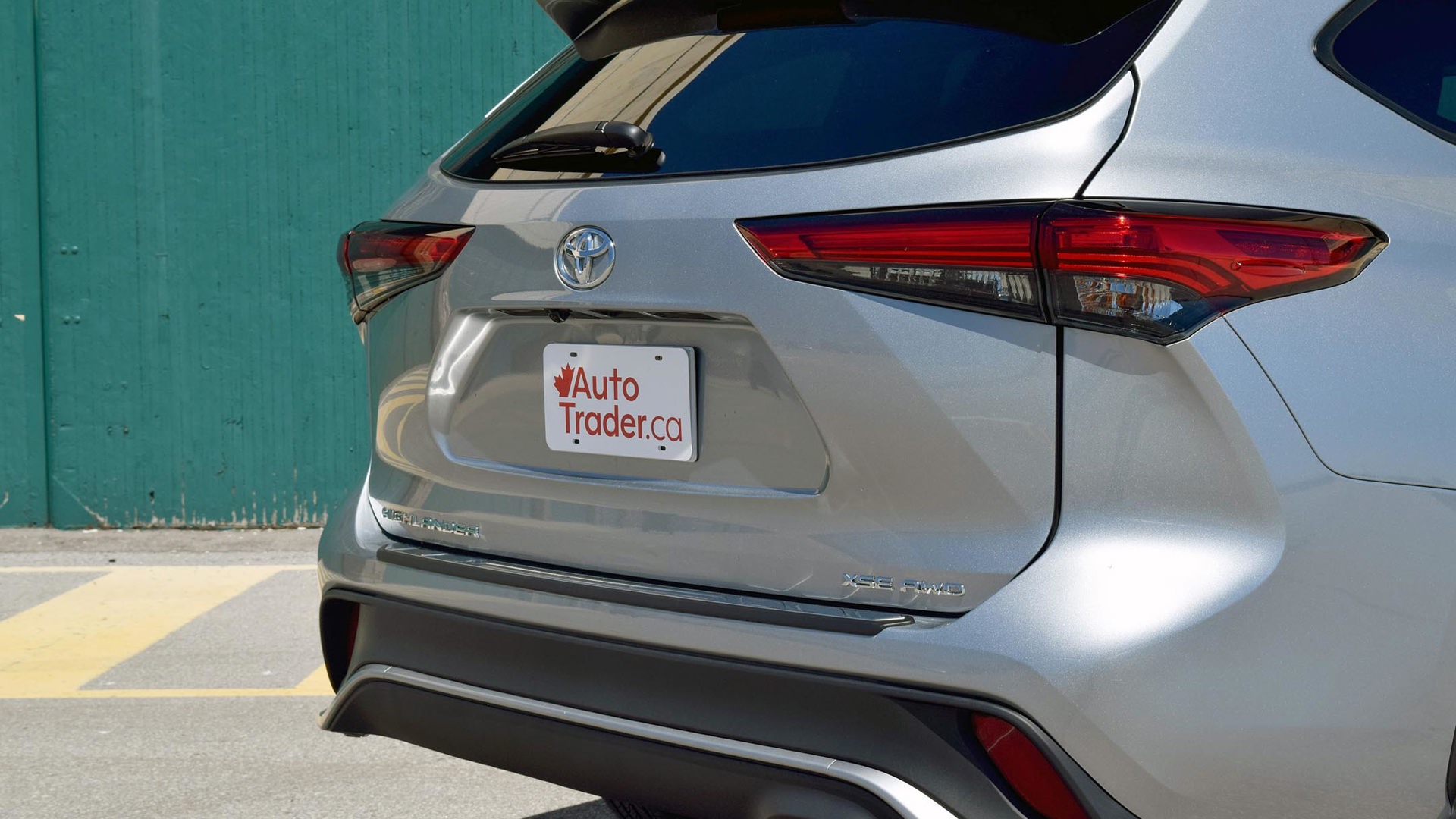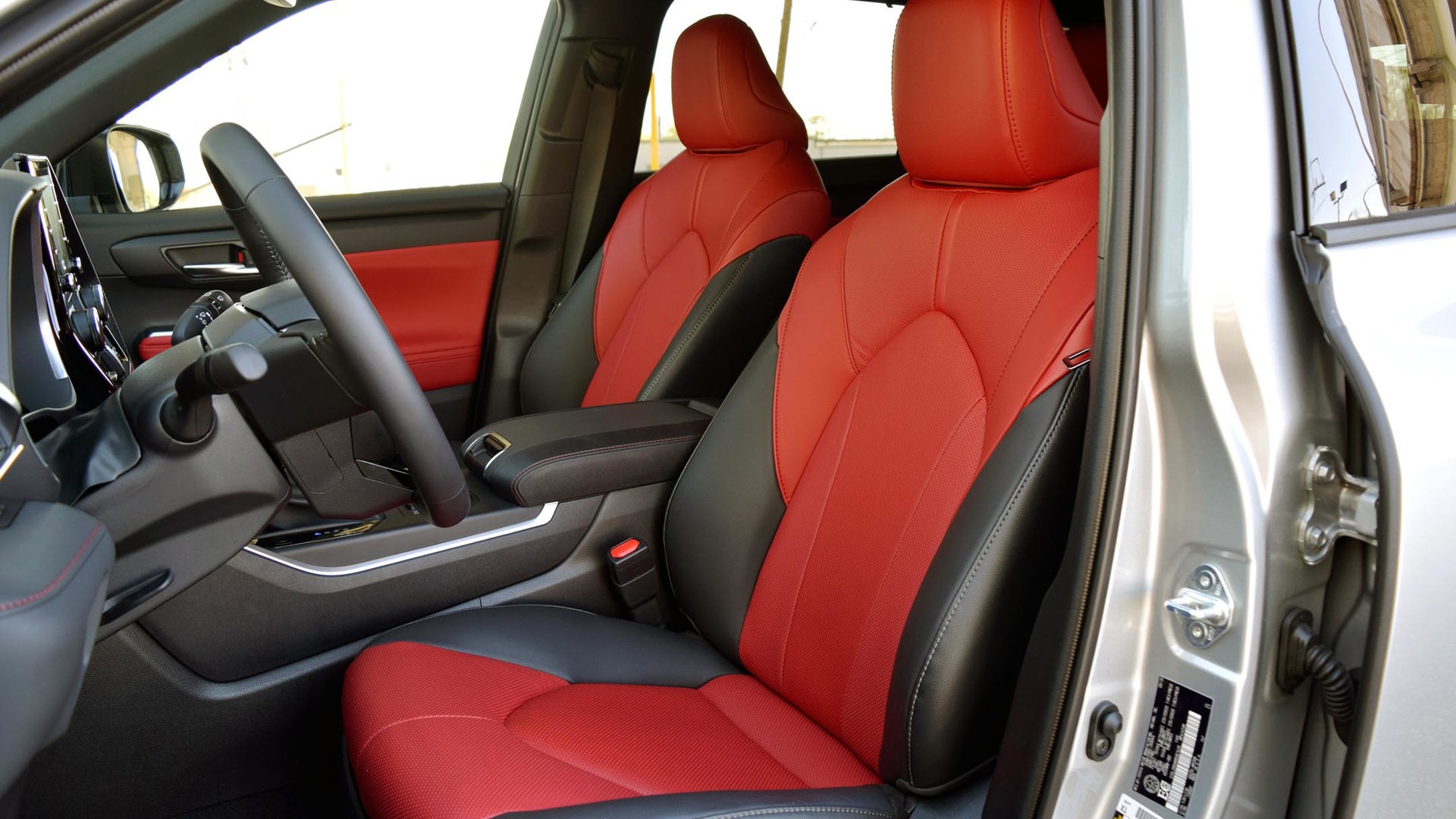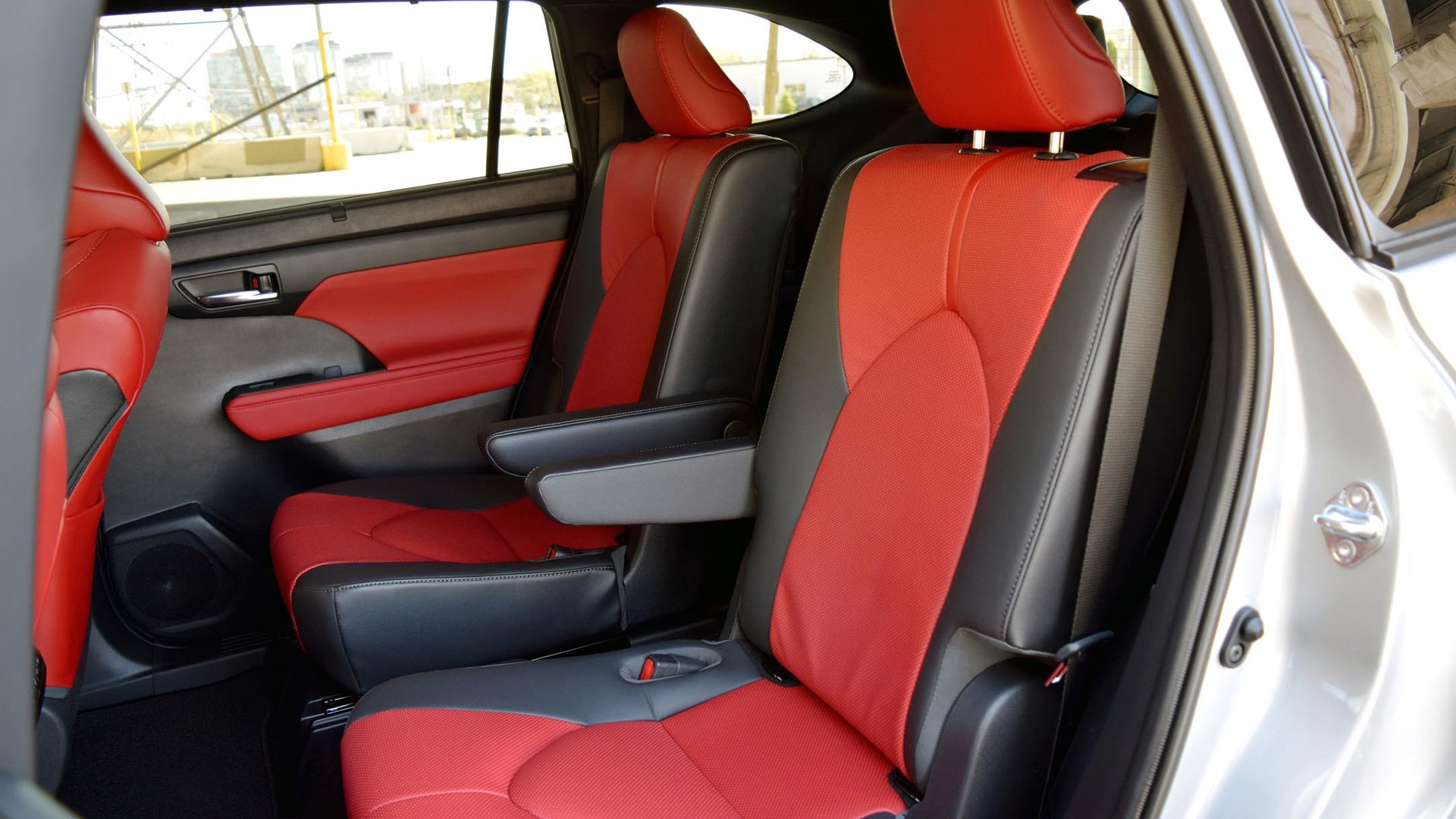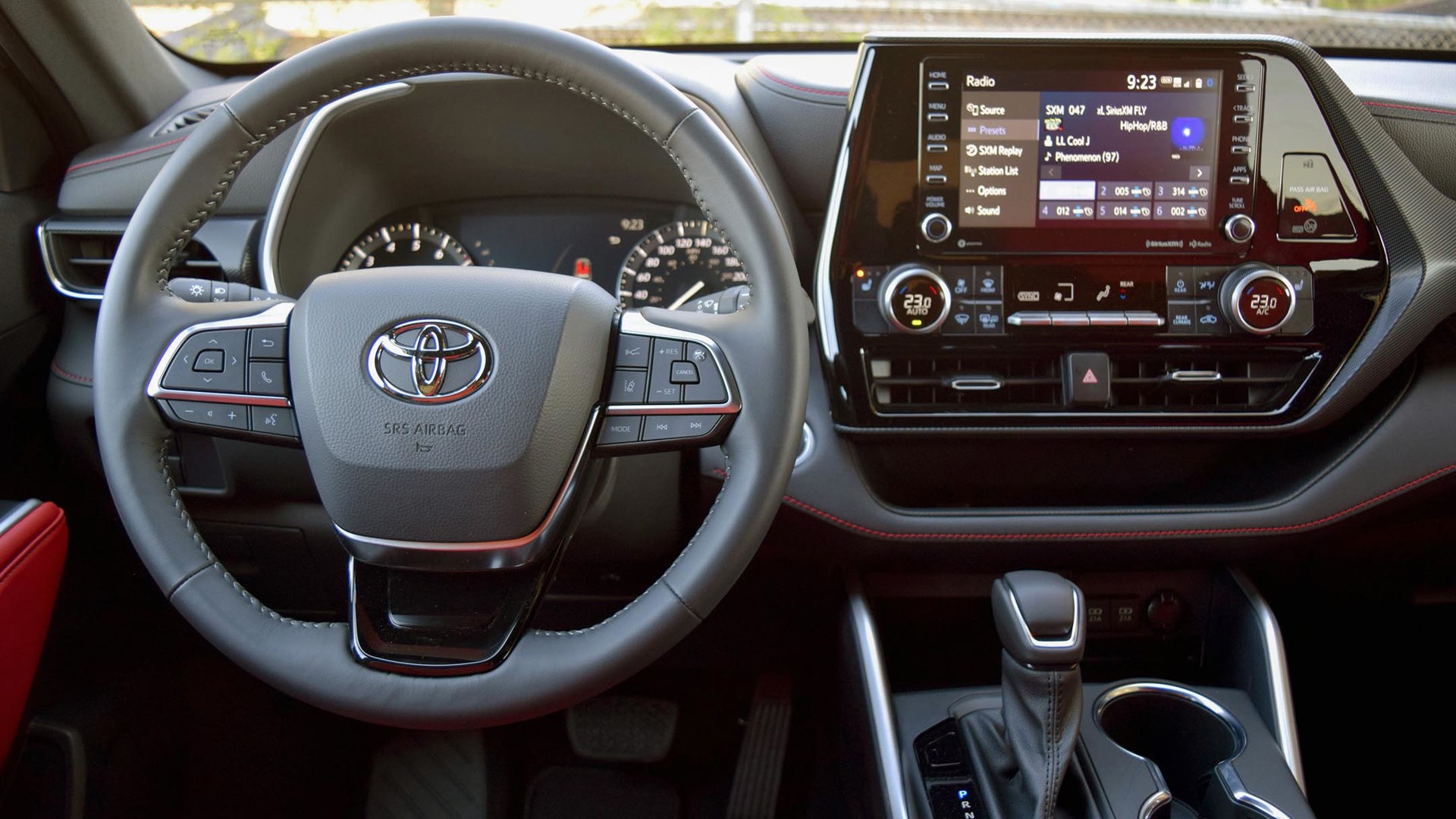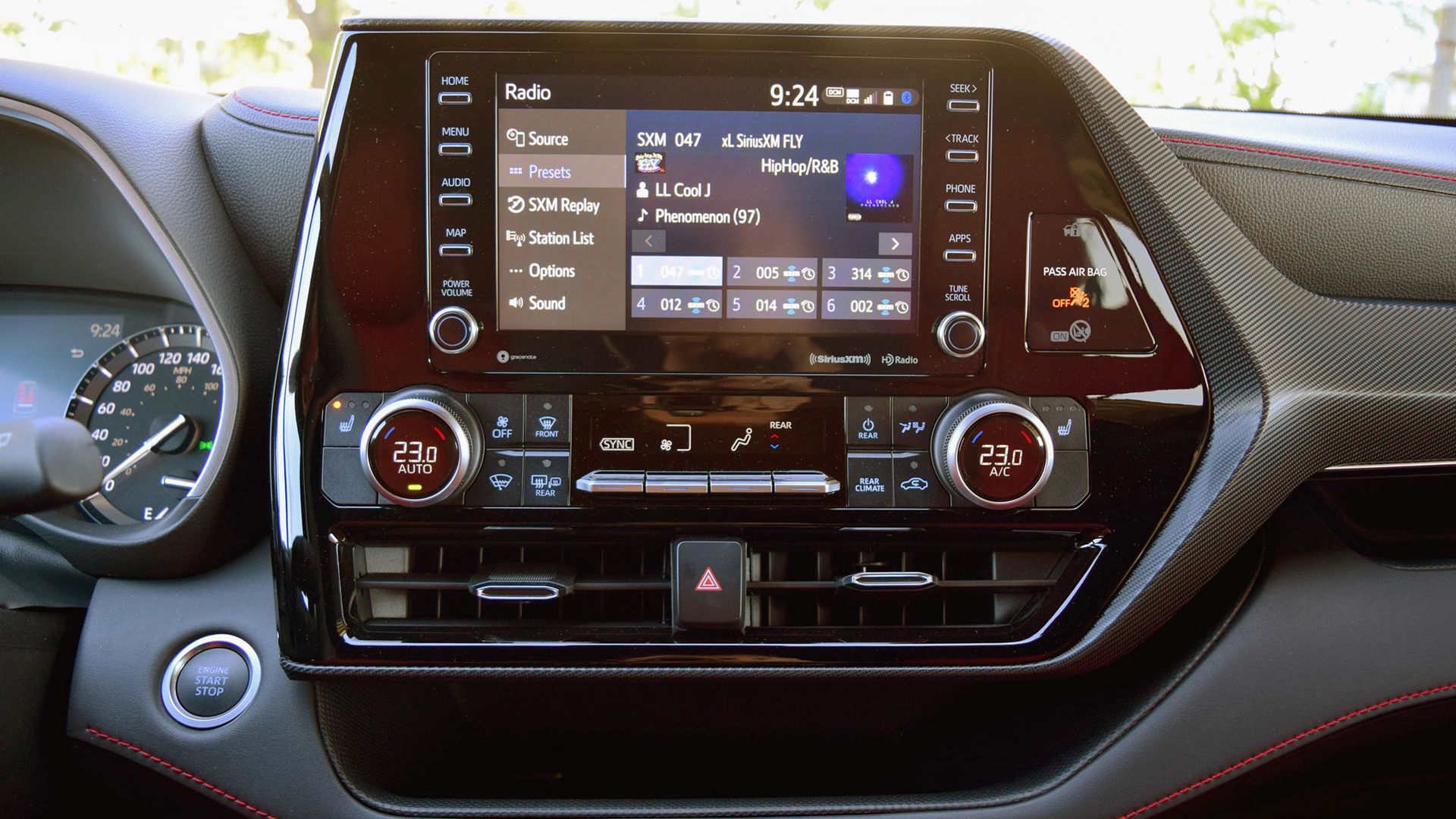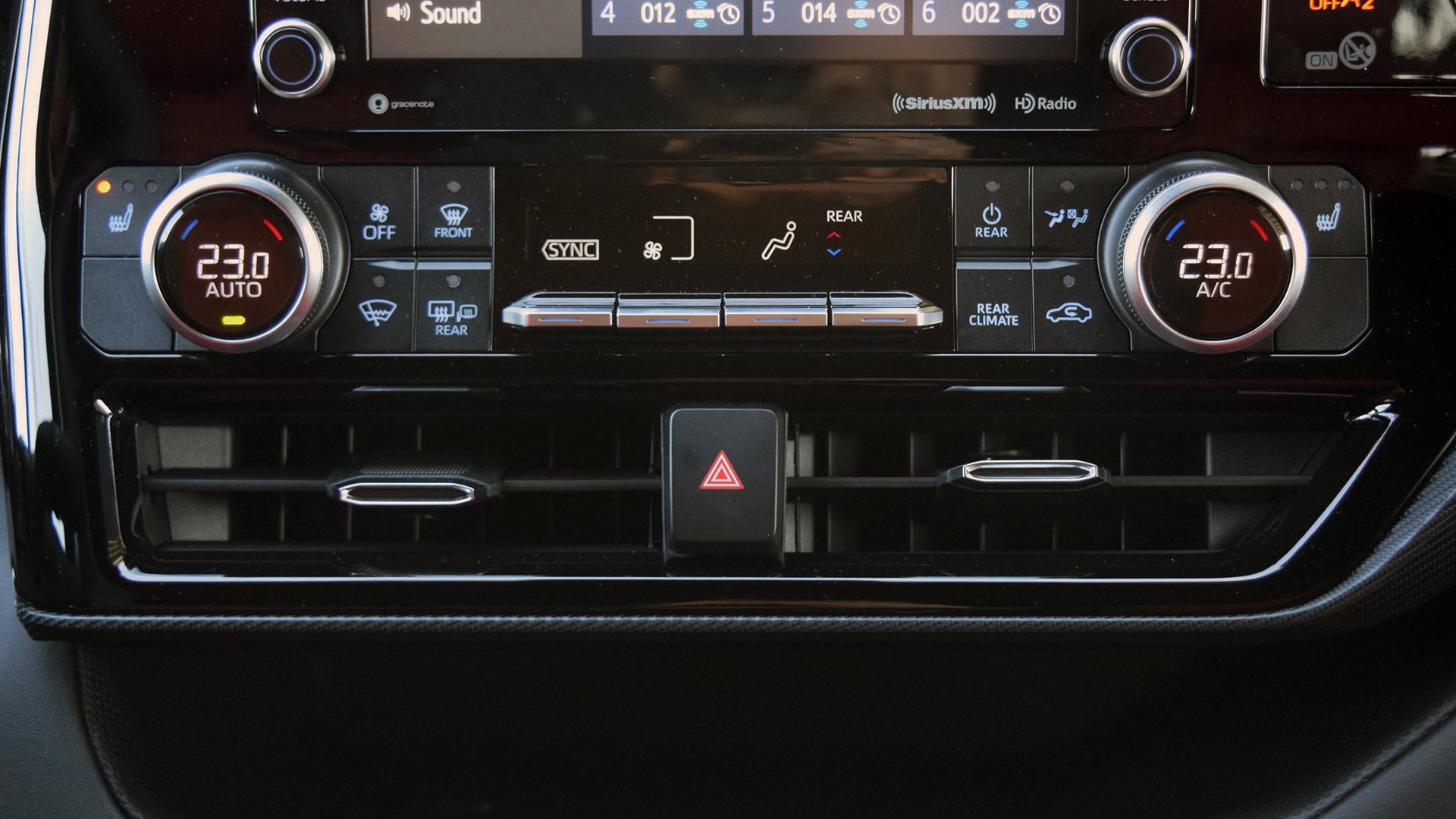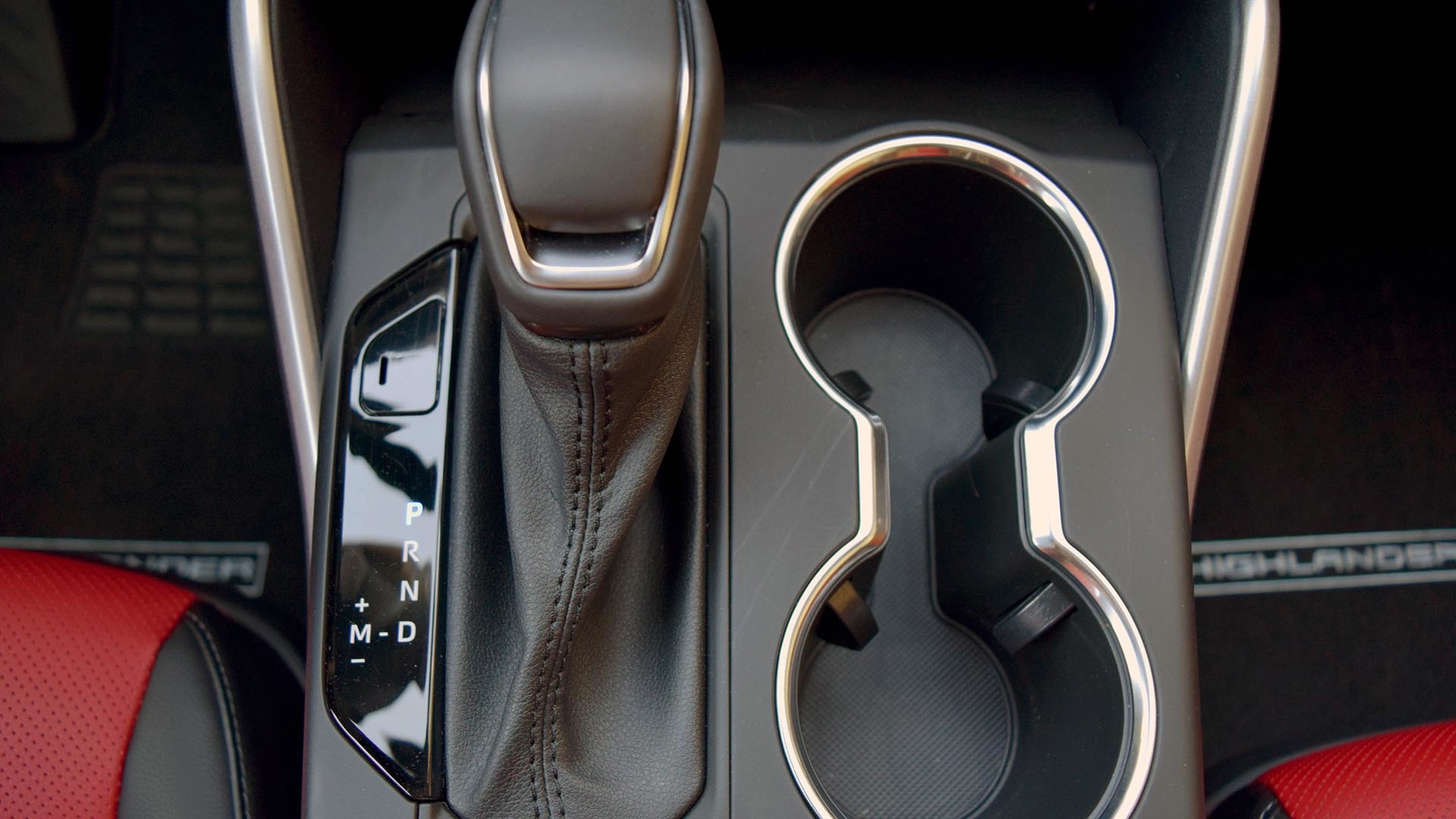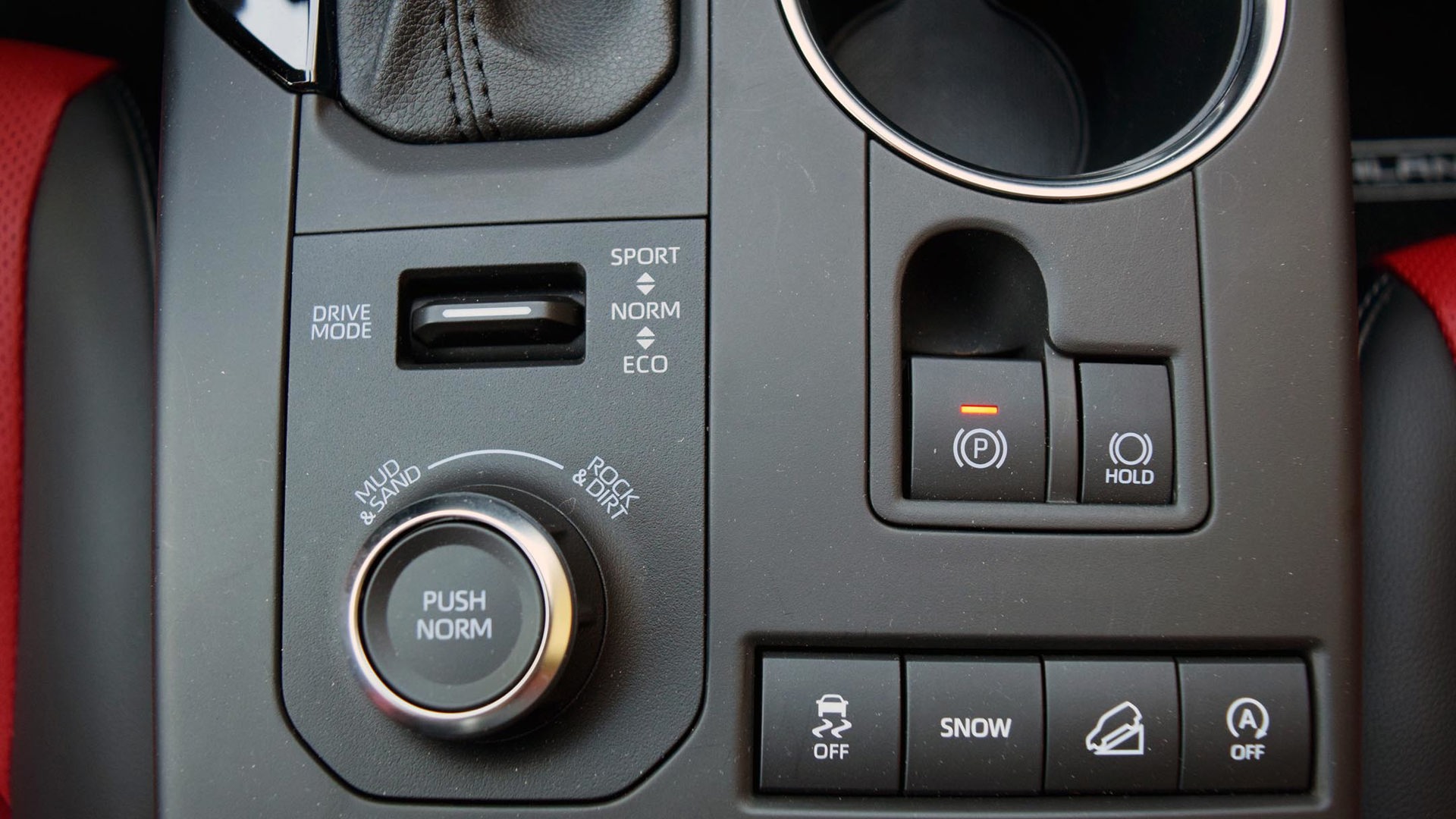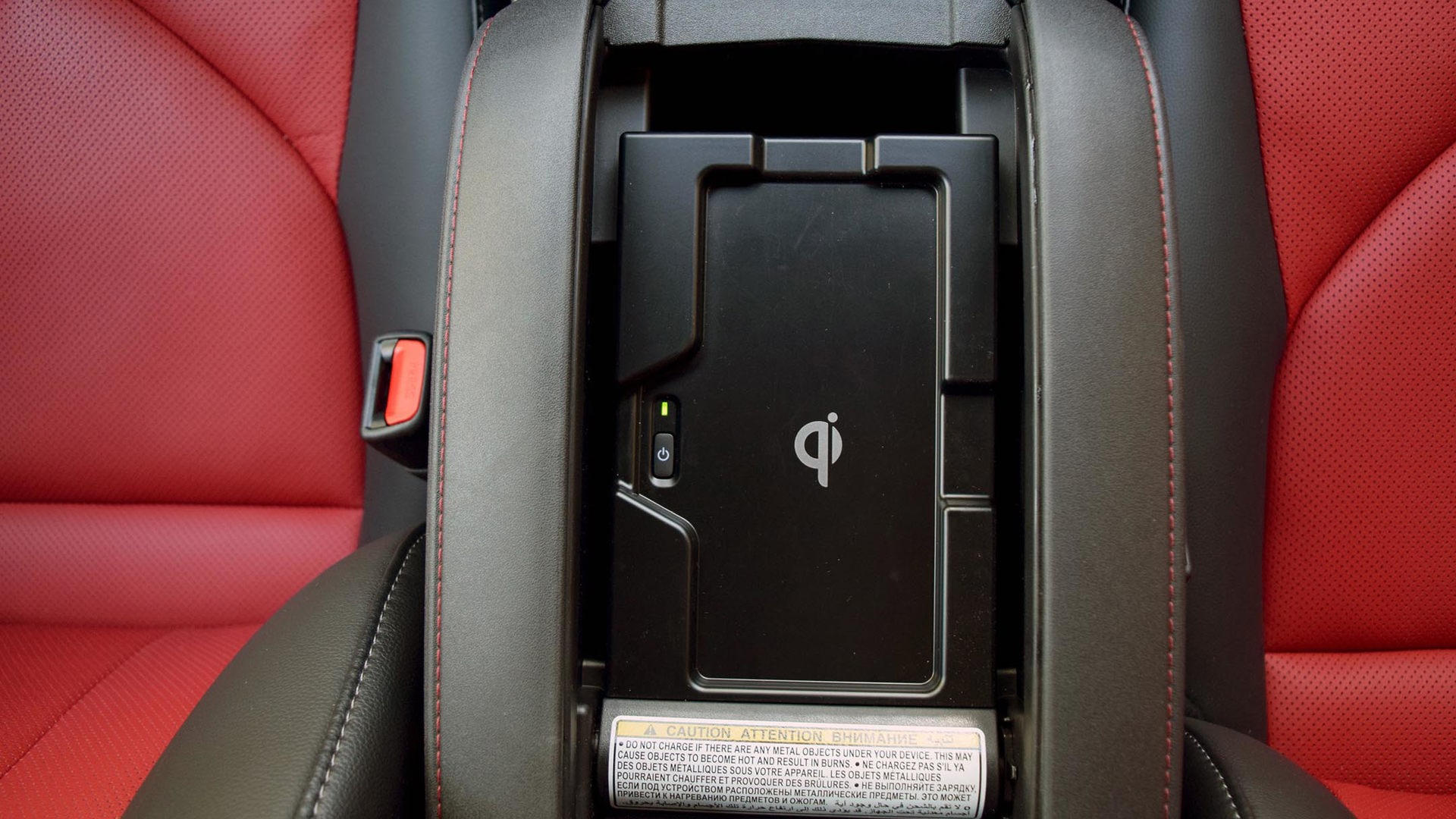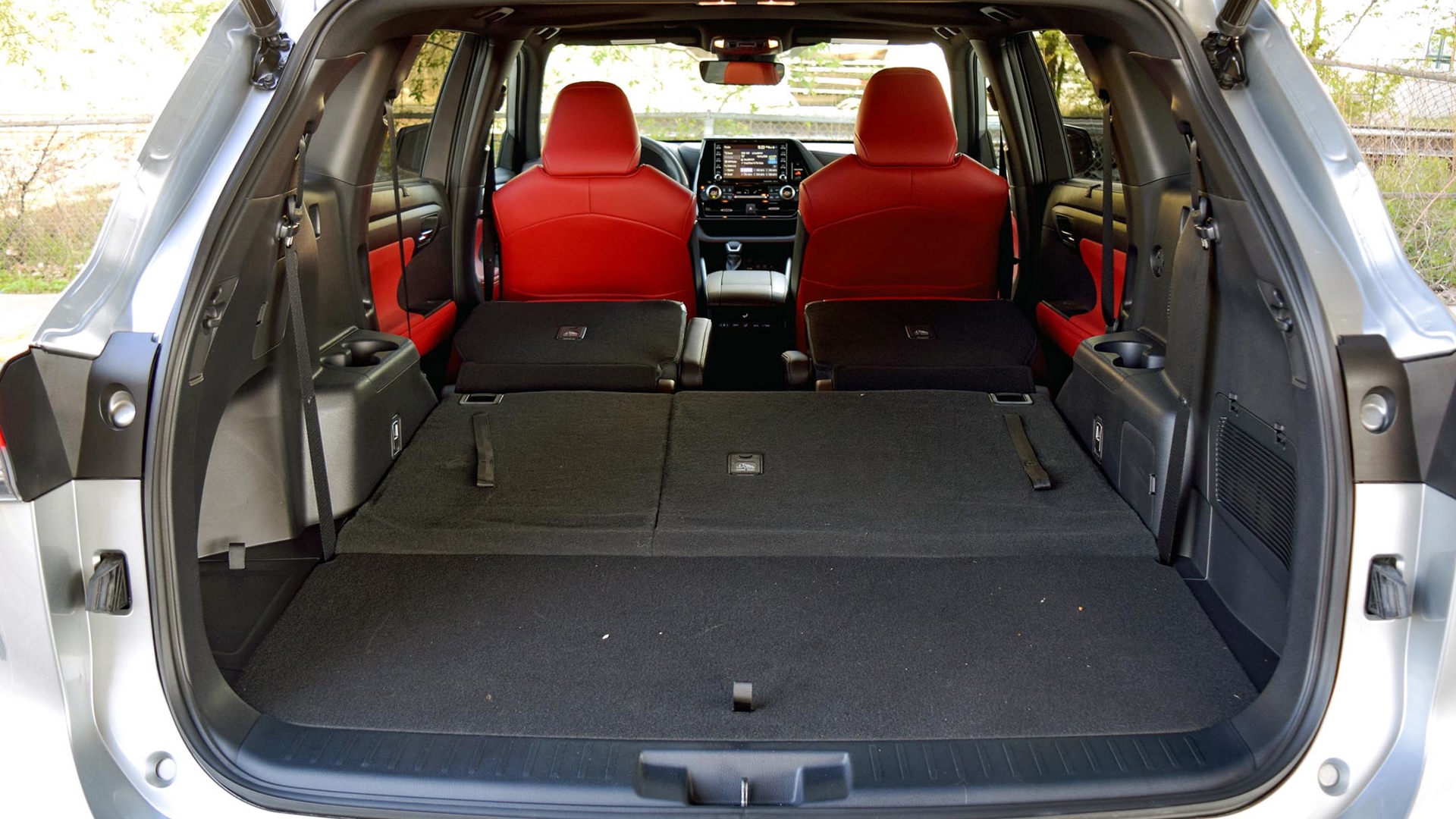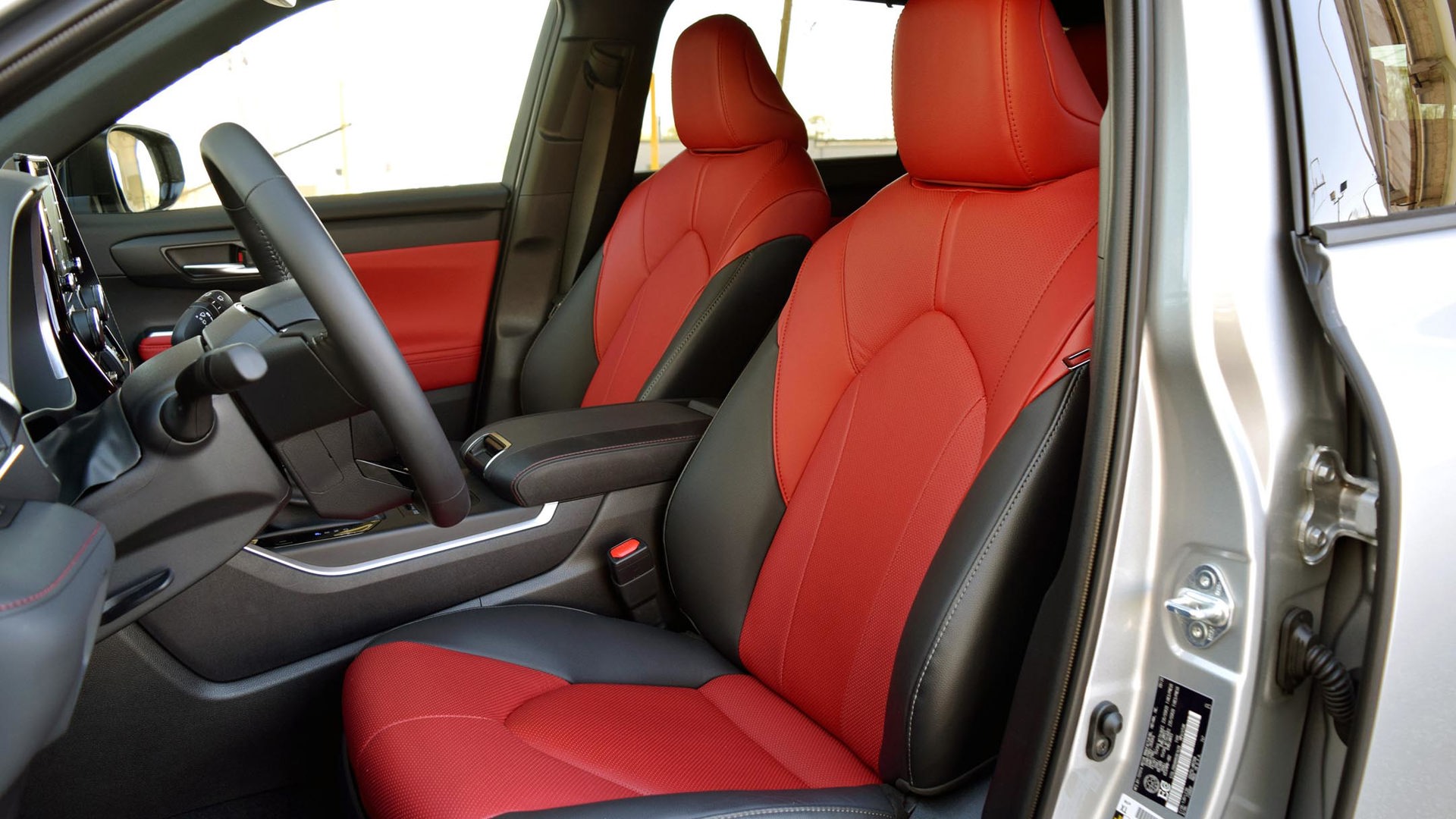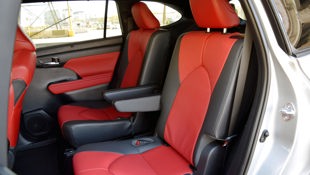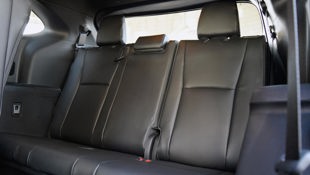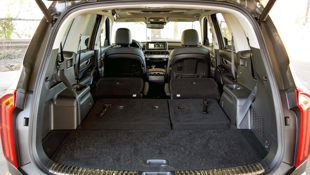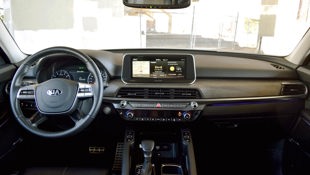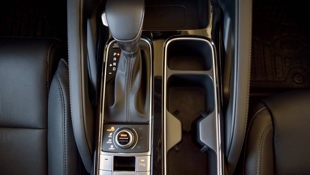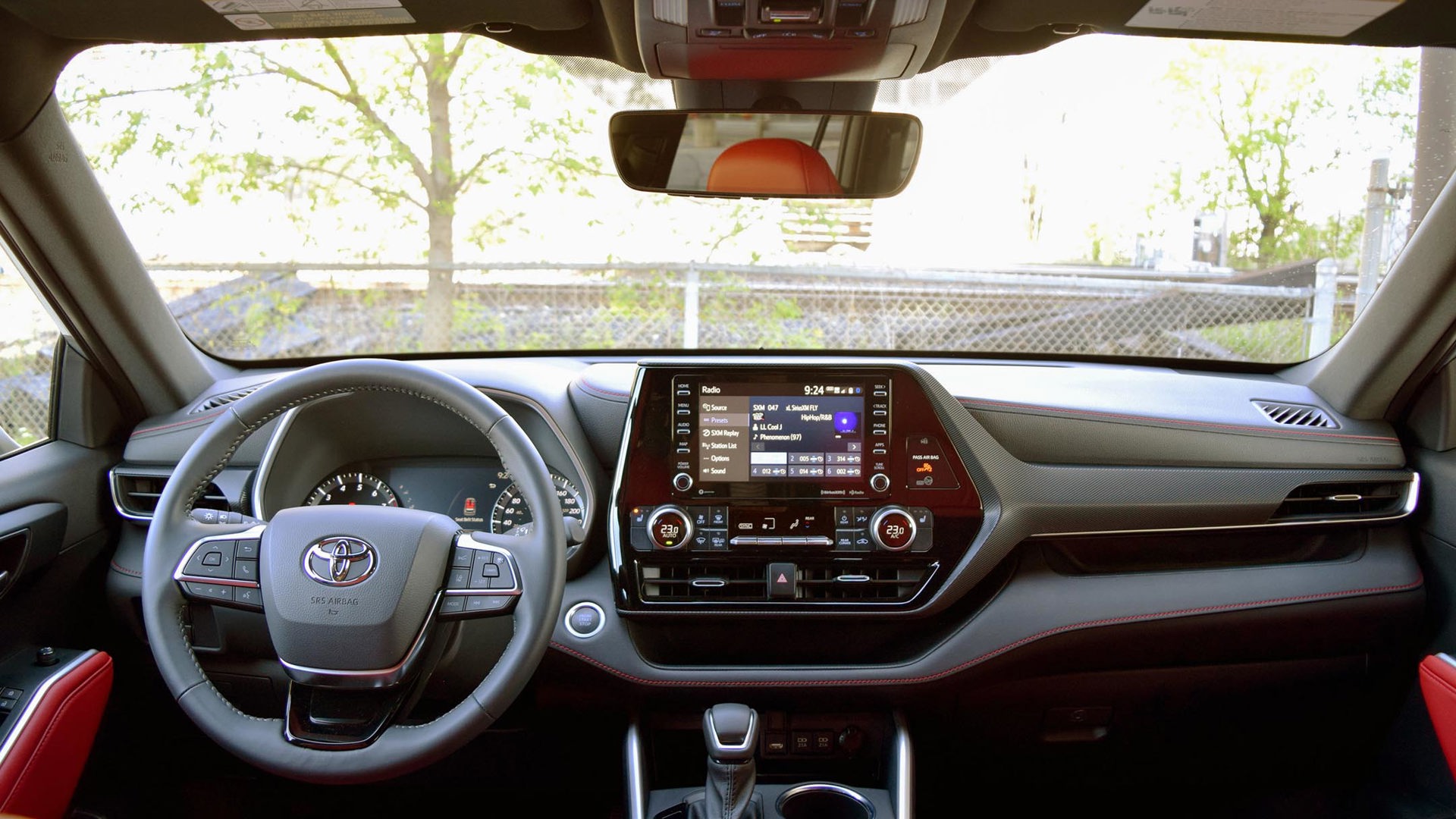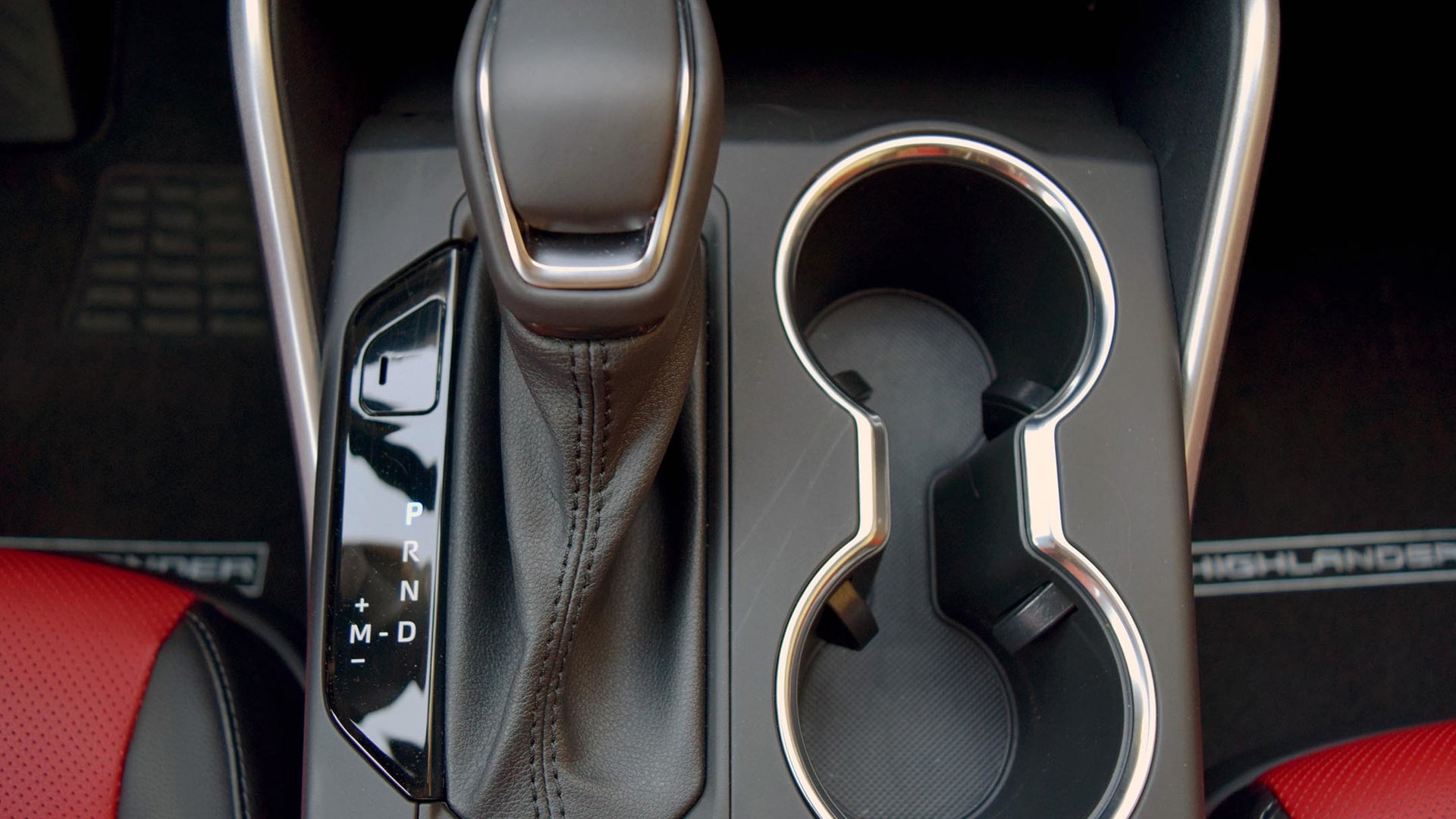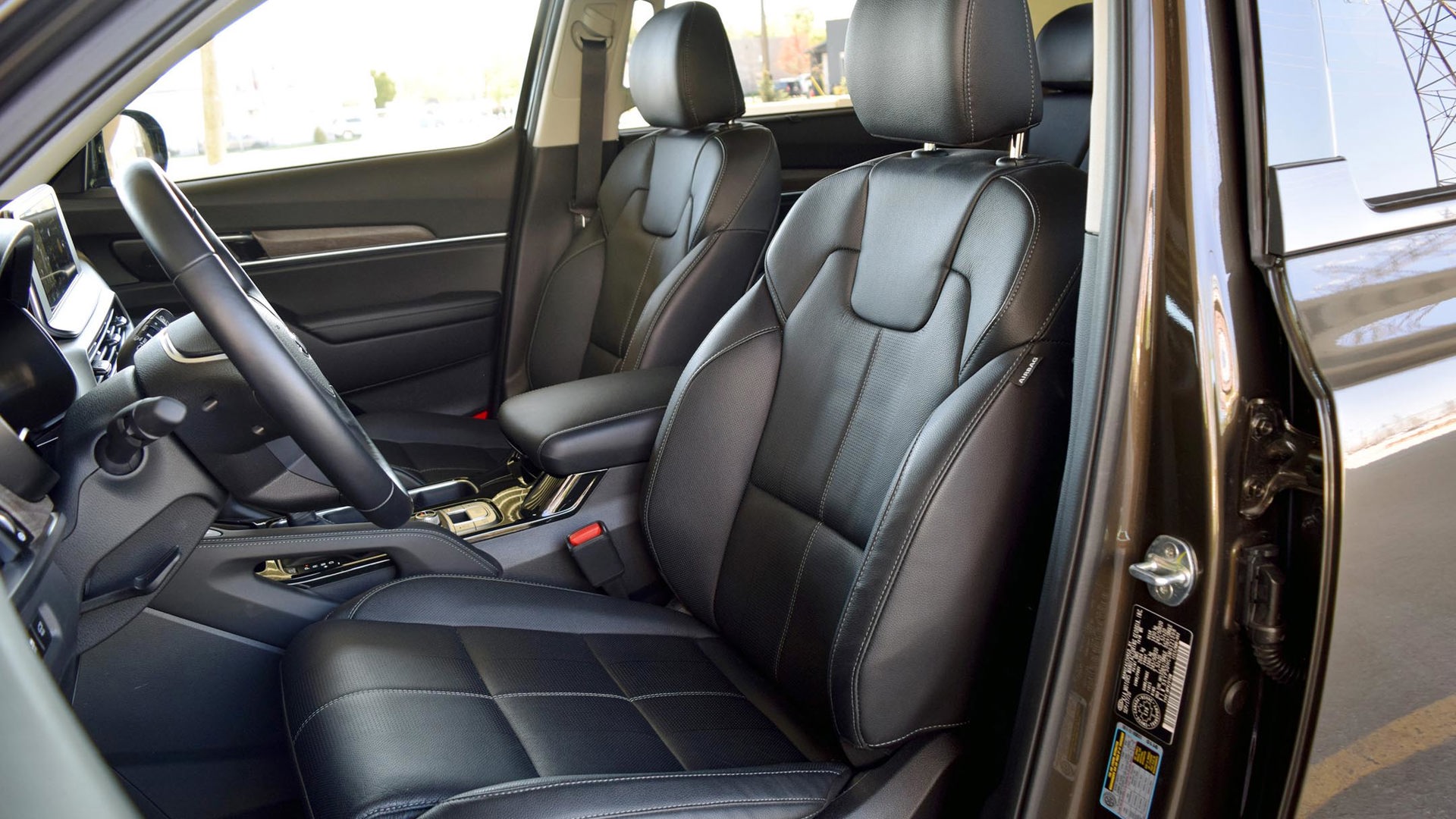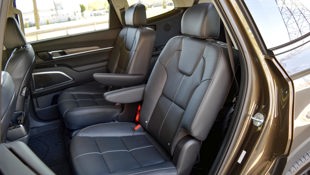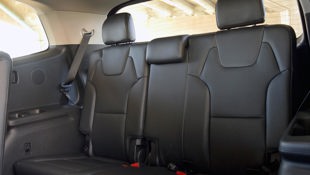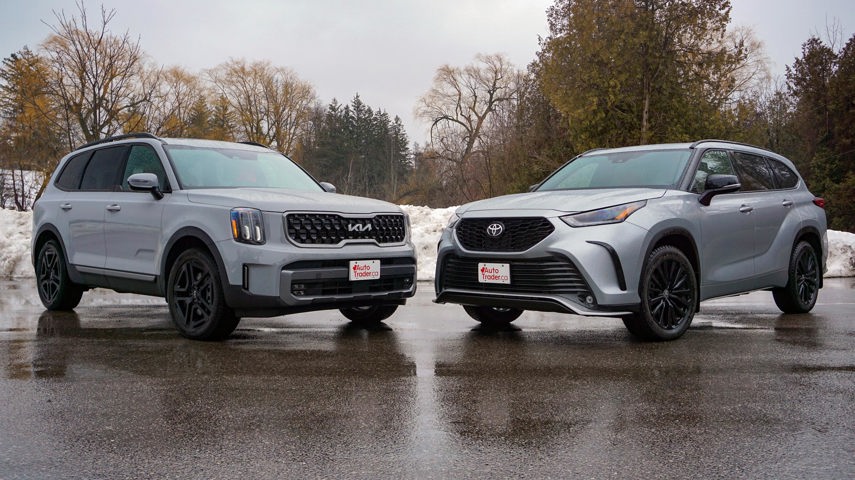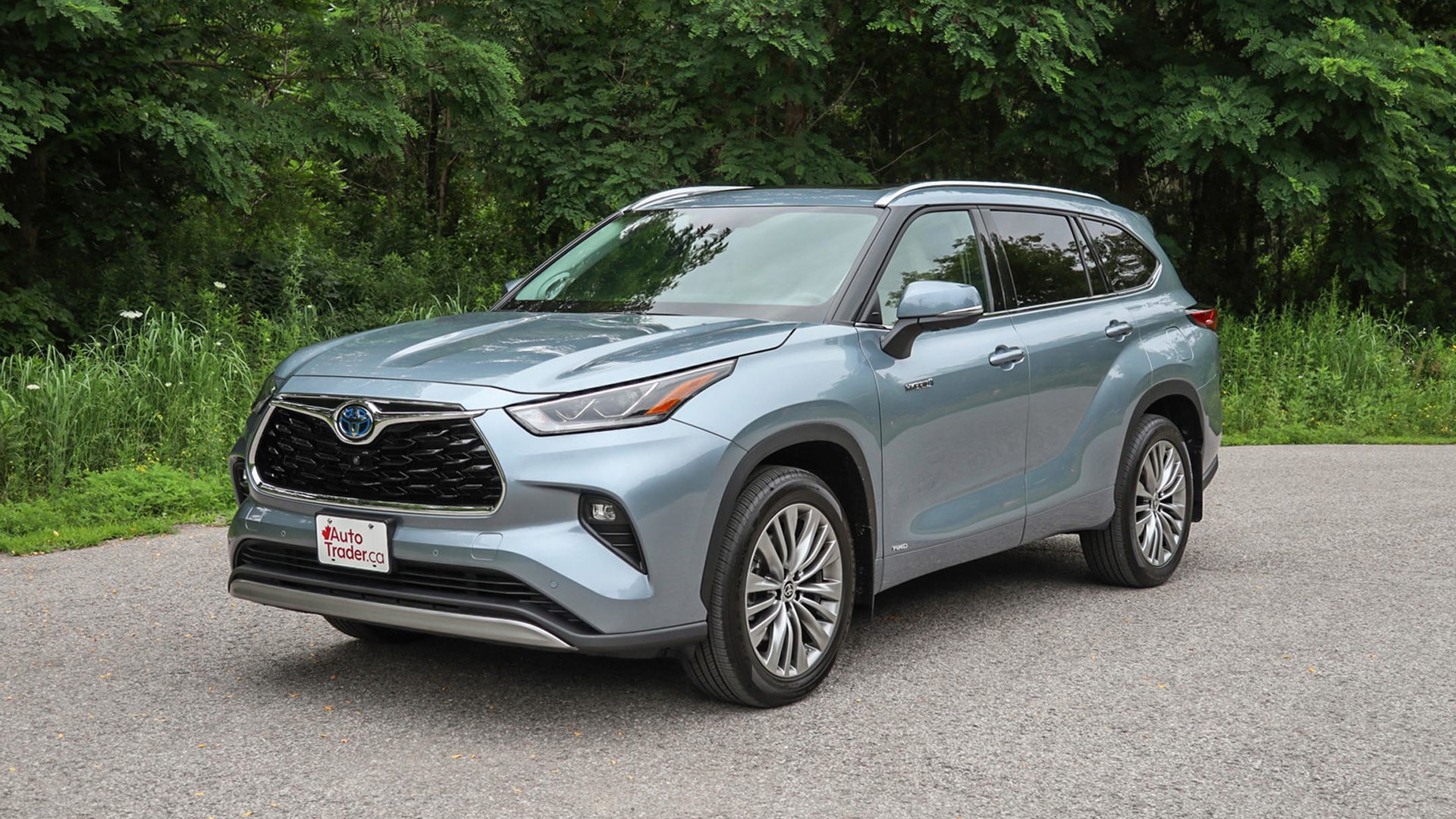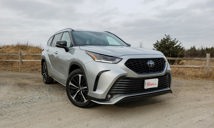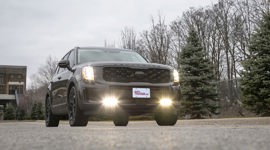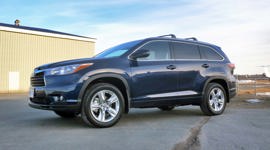Comparison Data
|
2021 Kia Telluride SX Limited Nightsky Edition
|
2021 Toyota Highlander XSE
|
|---|---|
|
Engine Displacement
3.8L
|
3.5L
|
|
Engine Cylinders
V6
|
V6
|
|
Peak Horsepower
291 hp @ 6,000 rpm
|
295 hp @ 6,600 rpm
|
|
Peak Torque
262 lb-ft @ 5,200 rpm
|
263 lb-ft @ 4,700 rpm
|
|
Fuel Economy
12.6 / 9.7 / 11.3 L/100 km cty/hwy/cmb
|
11.8 / 8.6 / 10.3 L/100 km cty/hwy/cmb
|
|
Cargo Space
601 / 1,304 / 2,455 L behind 3rd/2nd/1st row
|
453 / 1,370 / 2,387 L behind 3rd/2nd/1st row
|
|
Base Price
$55,695
|
$48,750
|
|
A/C Tax
$100
|
$100
|
|
Destination Fee
$1,890
|
$1,860
|
|
Price as Tested
$57,935
|
$50,710
|
|
Optional Equipment
$250 – Dark Moss Green Paint, $250
|
None
|
Packed with all-wheel drive and three rows of seating, large crossovers are quickly becoming the top choice for families.
Far from the mundane minivan or the appliance-like SUVs of old, the 2021 Toyota Highlander and Kia Telluride aim for something more modern and accommodating. With tons of features, capability, and style to go along with reasonable price points, these two should be on every family’s shortlist.
Styling
Both vehicles pack a pretty strict two-box design, though thanks to their proportions and body lines they look dramatically different. With a higher shoulder line, smaller windows, blacked-out A-pillars, and a tightly pinched window by the D-pillar, the Highlander seems sleeker and smaller at first glance. Of course, that feeling fades as you spend more time around it, but the design is effective at making the crossover more approachable. In the XSE trim tested here, the Highlander has a large and wide lower grille, flanked by gills in the front bumper.
Inside, the Highlander exhibits more personality, with two-tone upholstery featuring bright red leather. That bright hide is reserved for the front two rows, and the third row doesn’t get the red features, hinting at how important the Japanese automaker feels that third row is. The rest of the materials are just OK, but in typical Toyota fashion, the fit is above average. I love the HVAC dials with LED information displays within them, making the Highlander seem high-tech.
The Telluride looks less sophisticated, with more squared-off corners and accents. It looks large, almost on the scale of a bus, with a wide grille, vertical headlights, and an imposing front-end design. If you liked the confident look of a body-on-frame SUV, or something more rugged, then the Telluride will appeal to you, but some may describe it as primitive.
The interior is less polarizing, featuring a smart layout adorned with posh materials. There’s a nice textured open-pore wood accent found across the dash, grab-handles by the centre console, plenty of in-cabin storage and features like USB ports for the second row, hidden in the backs of the front seats.
Highlander: 7.5/10; Telluride: 8.5/10
Safety
Both vehicles have been awarded with the Top Safety Pick+ rating from the Insurance Institute for Highway Safety (IIHS) and come well equipped with advanced safety features.
The Highlander arrives with blind-spot monitoring, rear cross-traffic alert, lane-keeping assistance, adaptive cruise control, automatic high-beam headlights, and a forward-collision warning system that can detect pedestrians and bicycles, all as standard equipment.
The Telluride features all of these safety systems and a few more including driver attention alert and rear parking sensors, while top-trim models get front parking sensors and a blind-spot monitoring system that triggers a camera feed of the vehicle’s blind spots whenever you signal a lane change.
Highlander: 8.5/10; Telluride: 9.5/10
Features
Both vehicles are loaded with standard features and offer additional gadgets and goodies. For example, the Highlander features standard dual-zone climate control, heated front seats and support for Android Auto and Apple CarPlay (not to mention several USB ports for the front and second rows of seats.) For an extra cost, buyers can also get a heated steering wheel, ventilated front seats, rear sunshades, a head-up display, heated second-row seats, three-zone climate control, a sunroof, wireless phone charger, and an upgraded sound system with a feature that can broadcast the driver’s voice to the rear seats.
The Telluride has many of the same features and offers a few more standard and optional items. While it comes with heated front seats as standard equipment, it also includes a heated steering wheel from the base level, as well as three-zone climate control and a wireless phone charger. The optional equipment is pretty impressive, with Kia offering a self-levelling rear suspension, heated seats for the second row, ventilated seats for the first and second rows, a head-up display, ambient lighting, rear sunshades, and an upgraded sound system.
Highlander: 8/10; Telluride: 9/10
User Friendliness
Both vehicles feature familiar layouts and don’t try anything too different when it comes to operation. The Highlander is easy to get into and familiarize yourself with, but the seven-inch infotainment system is lacking. With simple-looking graphics and relatively slow response, it wasn’t very fun to use. Shoppers with a bigger budget are recommended to get a model with the larger 12.3-inch touchscreen which is more impressive and easier to use. Beyond the infotainment and controls, the Highlander’s smaller rear windows impede visibility.
Getting in and out of the third row of the Highlander isn’t very easy, and adults will be accused of lacking grace whenever they need to access it. The space to get back there is narrow, and it’s hard to imagine kids will have an easier time managing.
The Telluride feels like an upgrade in all these areas. Not only is it easier to get in and out of the third row, but its large infotainment system is also easy to use. Finally, the large windows make it easy to see out of – especially rearward.
Highlander: 7/10; Telluride: 8.5/10
Practicality
Getting into the third row of the Highlander is a pain, and those sitting back there are treated to less head- and legroom than in the Telluride. The second row is a bit better and more on par with the Telluride, but overall the Kia feels more accommodating.
The Telluride also packs 601 L behind the third row of seats, 1,304 L when those are folded down, and a spacious 2,455 L when the second row is folded down. The Toyota offers just 453 L behind the third row, 1,370 L when the third row is folded, and 2,387 L when both rows are folded.
Ultimately, the Telluride is the better choice for those who will be using the third row, while the Highlander is the way to go for those who will mostly use two rows and need space to carry more cargo.
Highlander: 7/10; Telluride: 8/10
Comfort
The Highlander, though spacious in the first two rows, features seats that are a little less plush and soft than the thrones in the Telluride. While reaching the third row of the Telluride is a far easier affair, and the second row feels a bit more spacious in terms of width, with more shoulder and hip room.
Ride quality is also a bit harsher in the Toyota, though that meant the suspension settled a bit quicker, rather than the Telluride which bounces around a bit like a boat.
Highlander: 7/10; Telluride: 7.5/10
Power
Motivating these two vehicles is a pair of V6 engines. The Highlander packs a 3.5L putting out 295 hp and 263 lb-ft of torque, while the Telluride uses a 3.8L that makes 291 hp and 262 lb-ft of torque. Both crossovers feature eight-speed automatic transmissions that send torque to all four wheels.
While the numbers are similar, I kept feeling that the Telluride could use a bit more grunt, as it never felt like it was in a hurry. Different drive modes helped to spur on the big crossover, as the sport setting helped usher quicker gear changes, but that disrupted the typically drama-free driving experience.
I far preferred the Toyota’s powertrain here, which was smoother, quicker to change gears, and found the ideal ratio at nearly every throttle input. While the Highlander also has different drive modes, I found it was well balanced and responded appropriately to every situation.
Highlander: 7.5/10; Telluride: 6.5/10
Driving Feel
The Highlander feels more engaging to drive, though that doesn’t mean all that much when you’re talking about a pair of 2,000-kg (4,409-lb) crossovers. With the Toyota, steering inputs are met with an appropriate response and less body roll than the Telluride. Like how the exterior design can make the Highlander feel smaller than it is, the driving feel is of something smaller than it is.
In contrast, the Telluride drives like a large SUV. While it swallows up potholes, speed bumps, and other imperfections along the drive route, it also feels far less responsive. Steering inputs are met with a delayed direction change, and there’s more sway than you’d find in the Toyota. If you’re one of the few that expect a three-row crossover to be a joy to drive, then the Highlander won’t disappoint.
Highlander: 7.5/10; Telluride: 6.5/10
Fuel Economy
While Toyota offers a hybrid version of the Highlander, the model tested didn’t use electrons to get going, leading it to return 11.8 L/100 km in city driving conditions, 8.6 on the highway, and a reasonable 10.3 in combined settings. The Telluride is far less fuel-friendly, returning 12.6 L/100 km in the city, 9.7 on the highway, and 11.3 combined.
Highlander: 7.5/10; Telluride: 6.5/10
Value
Those seeking three rows of seating and little else can opt for the front-wheel-drive Highlander L, which starts at $40,450. Add in the $1,860 freight charge and you’re looking at a total price of $42,310 before tax for the most affordable Highlander. The next step up in the model range is the LE model, which includes all-wheel drive as standard equipment in addition to power heated front seats for $45,810 (including delivery fees), while the XLE with three-zone climate control and power passenger seats is an extra $2,500. We tested the XSE model, which has an asking price of $50,610, while the fully loaded Limited model has a price of $54,010.
The Kia doesn’t have a bargain offering price like the Highlander L, with all Telluride models including all-wheel drive. The base EX model even includes navigation and a large 10.25-inch infotainment screen for a $46,195 asking price, which adds up to 48,090 with the $1,895 delivery fee. The SX model gets leather seats, an upgraded sound system, and a dual sunroof for $53,090 including destination, while the fully loaded SX Limited model is an extra $3,500. Our tester was the style-focused Nightsky trim, which had blacked-out elements and a total price of $57,590.
While more expensive in every configuration, the Telluride does include more features than the Highlander, so the price seems justified.
Highlander: 7.5/10; Telluride: 7.5/10
The Verdict
Each crossover has its merits, and after tallying up the scores it was a close matchup. Those seeking to make use of the third row won’t be happy with the Highlander’s implementation, while those on a budget will balk at the price of the Telluride. However, if you’re after a responsive, fuel-efficient drive the Toyota will impress, while the Telluride seems loaded with features and amenities. While the Highlander seems like a good fit for families, we’d swing for the Kia, as even the base EX model feels well equipped and is accommodating in all three rows. With bold style, high-tech features, and a comfortable ride, it’s the better pick.
